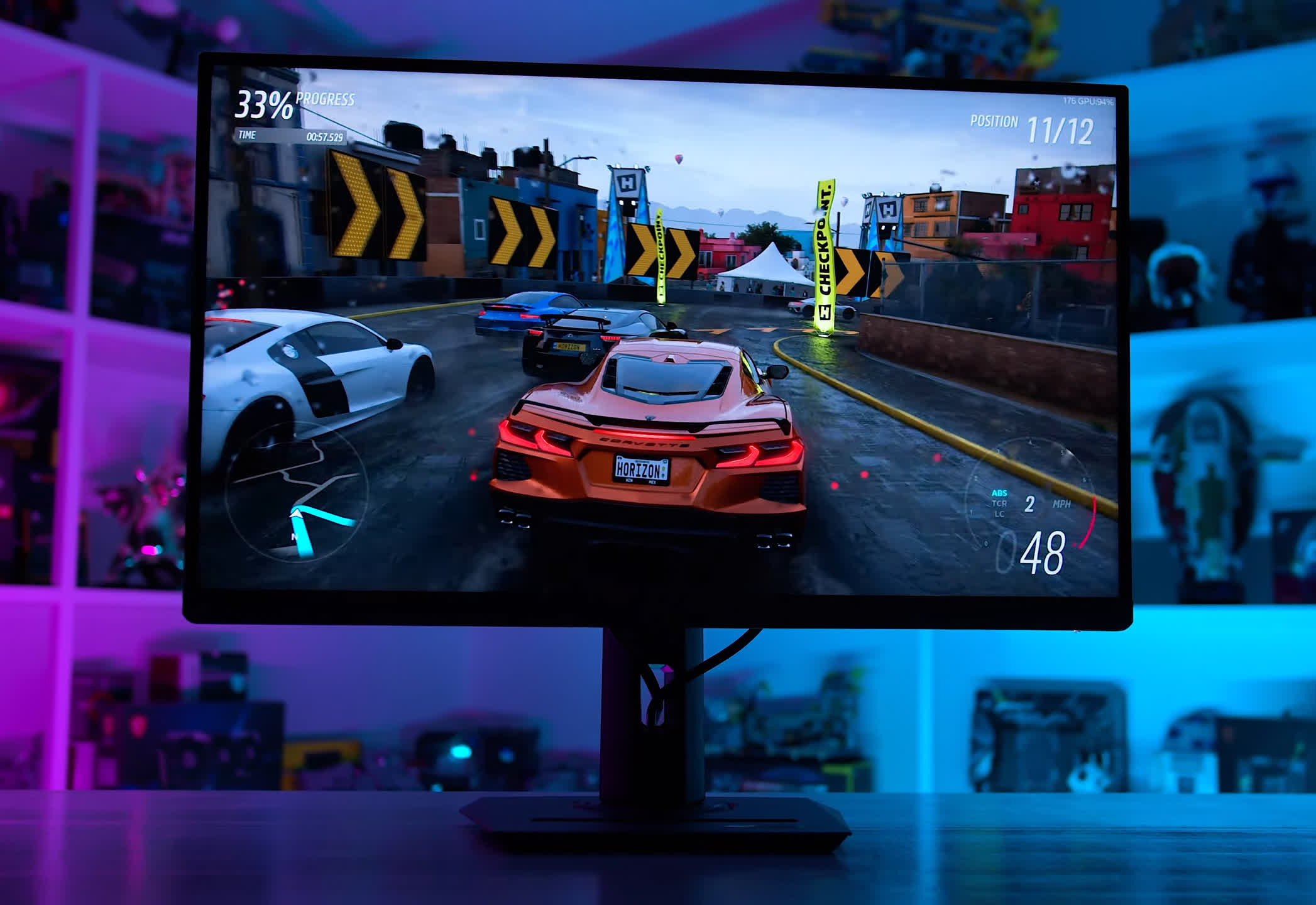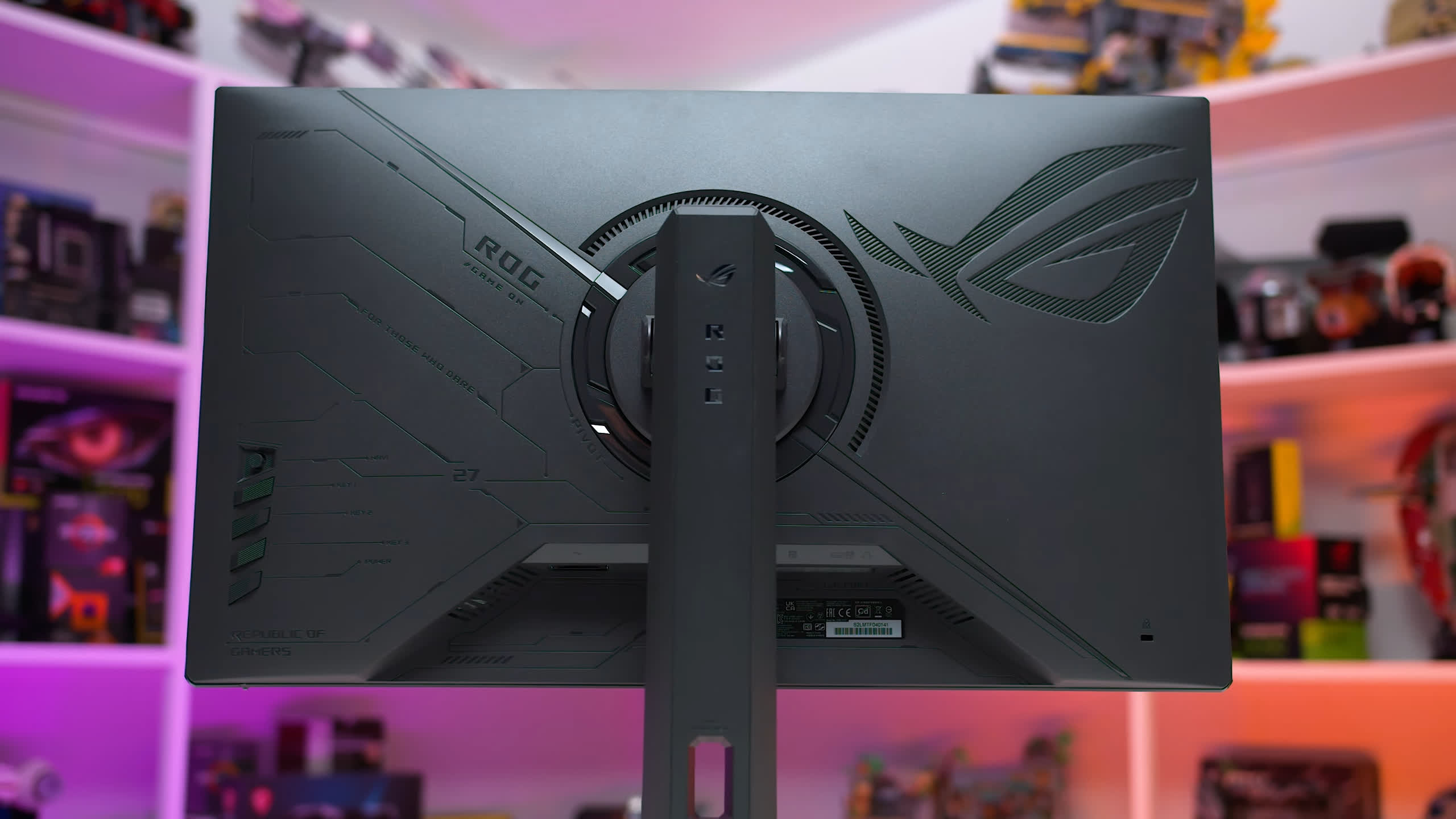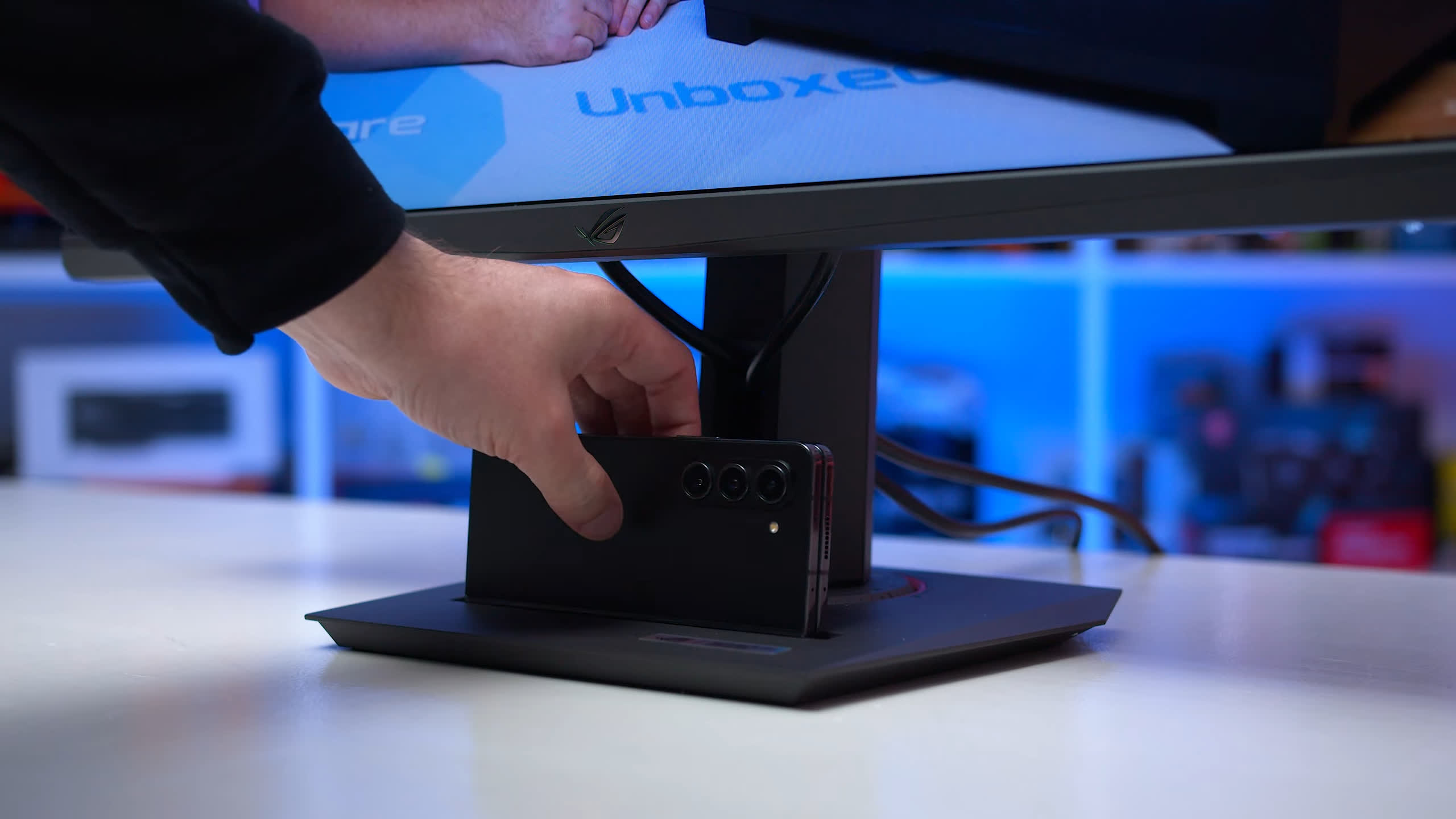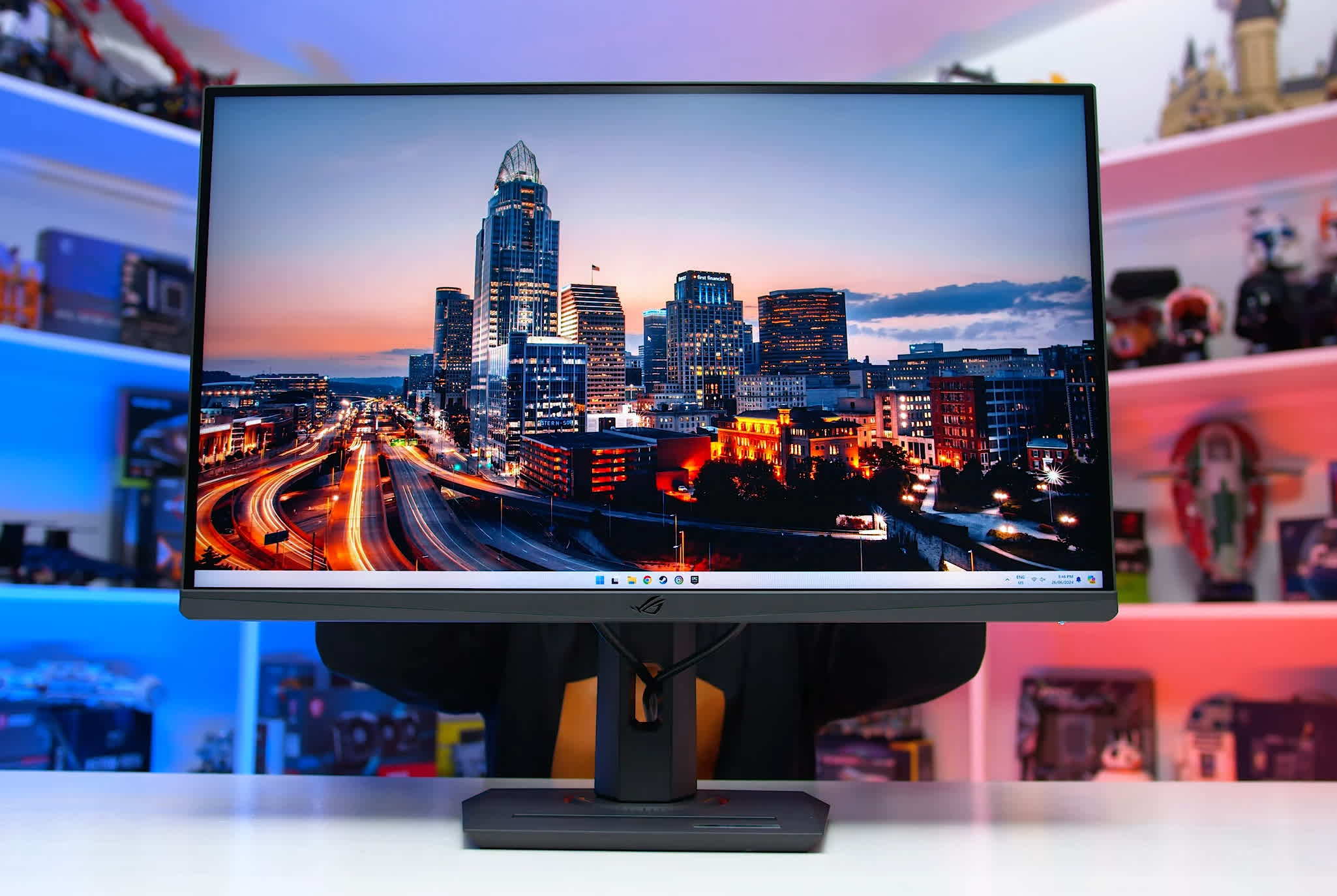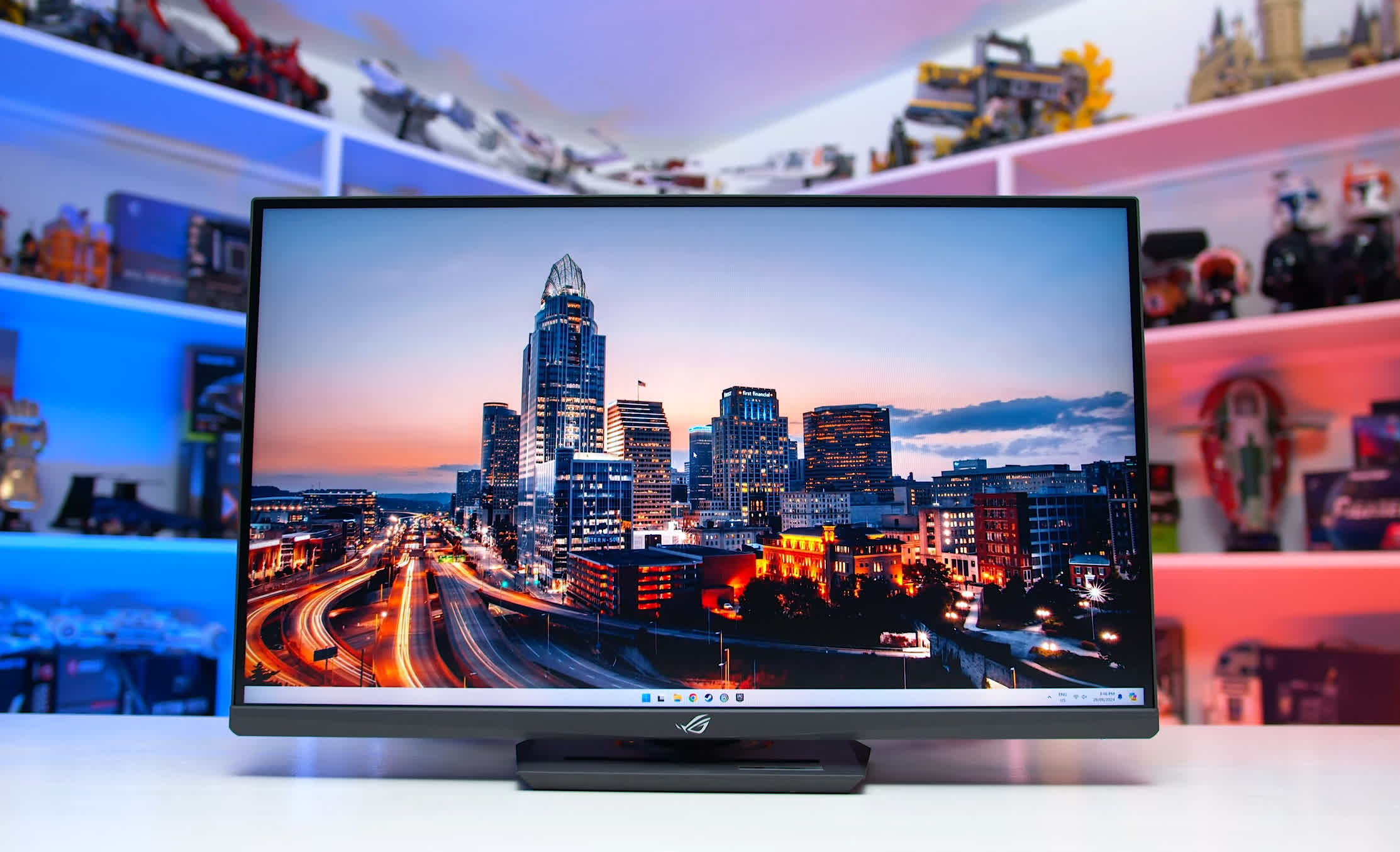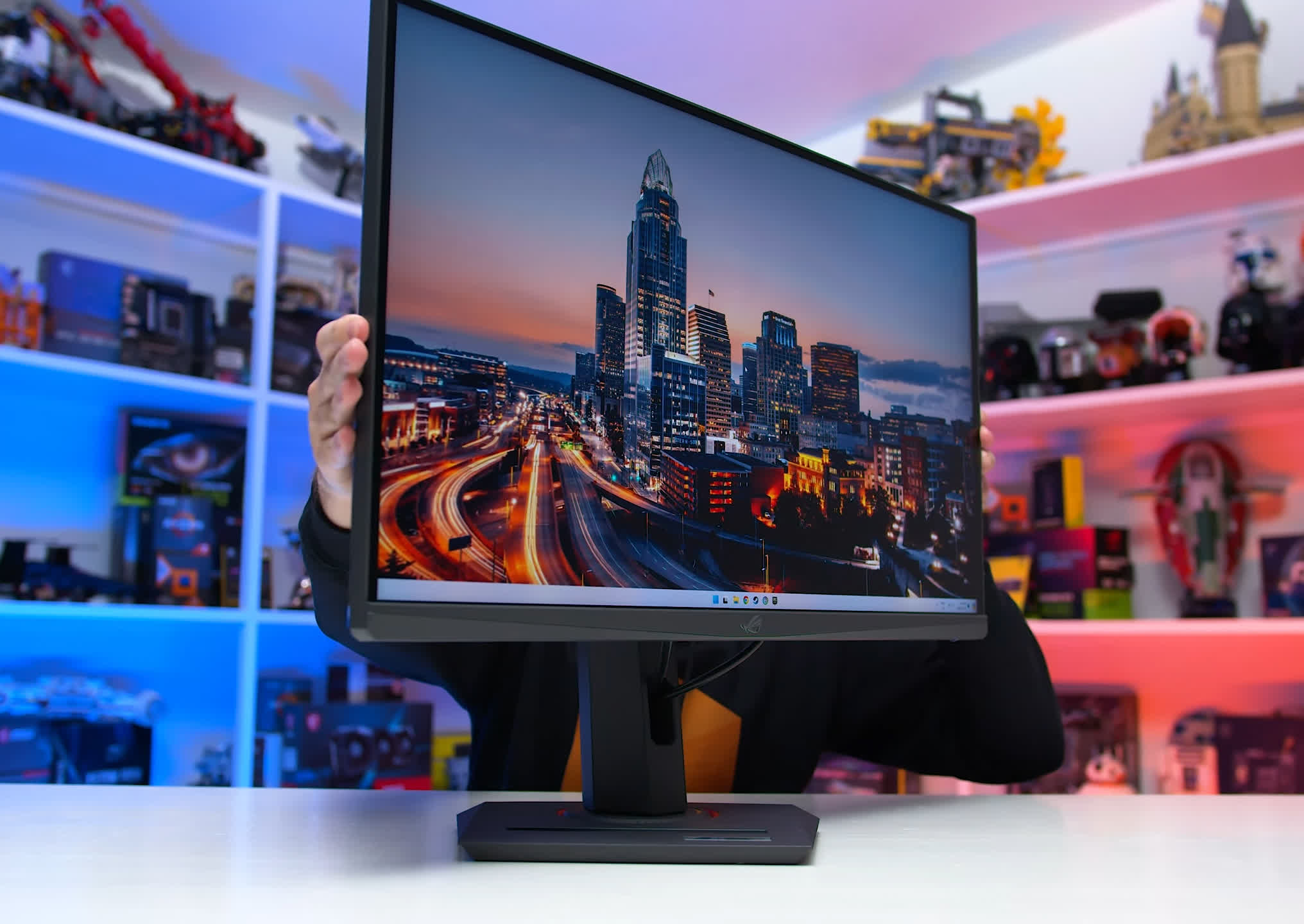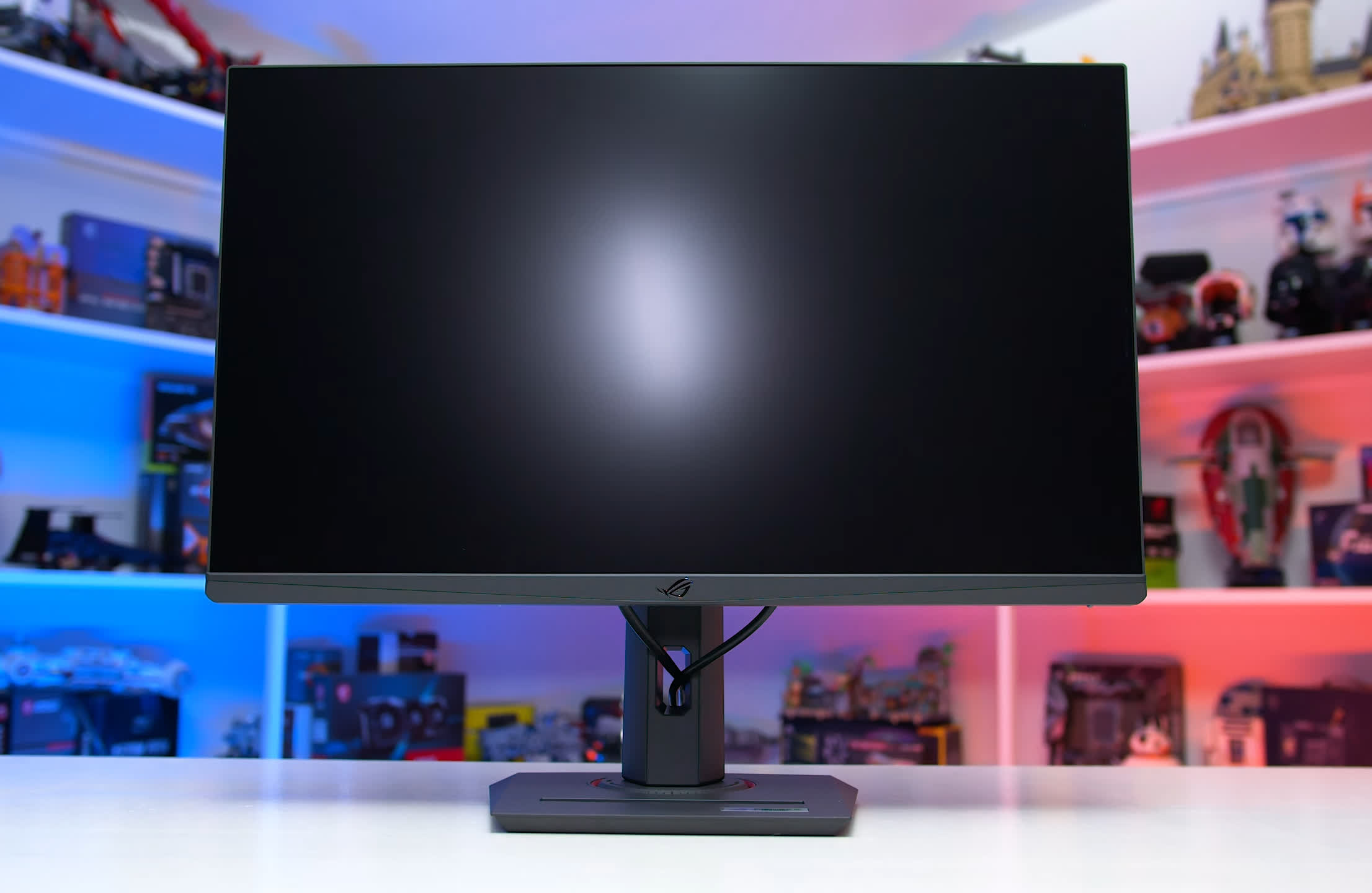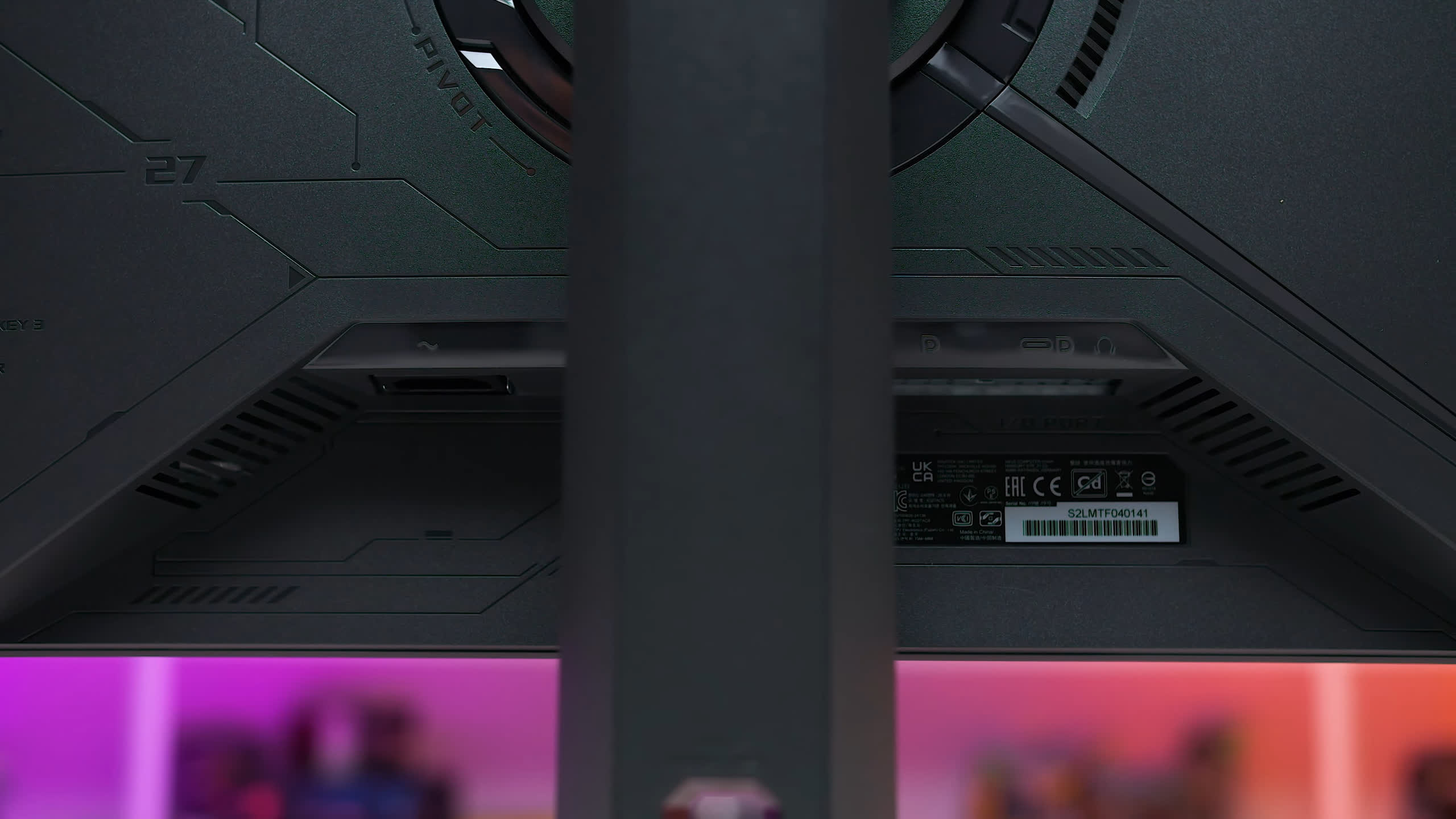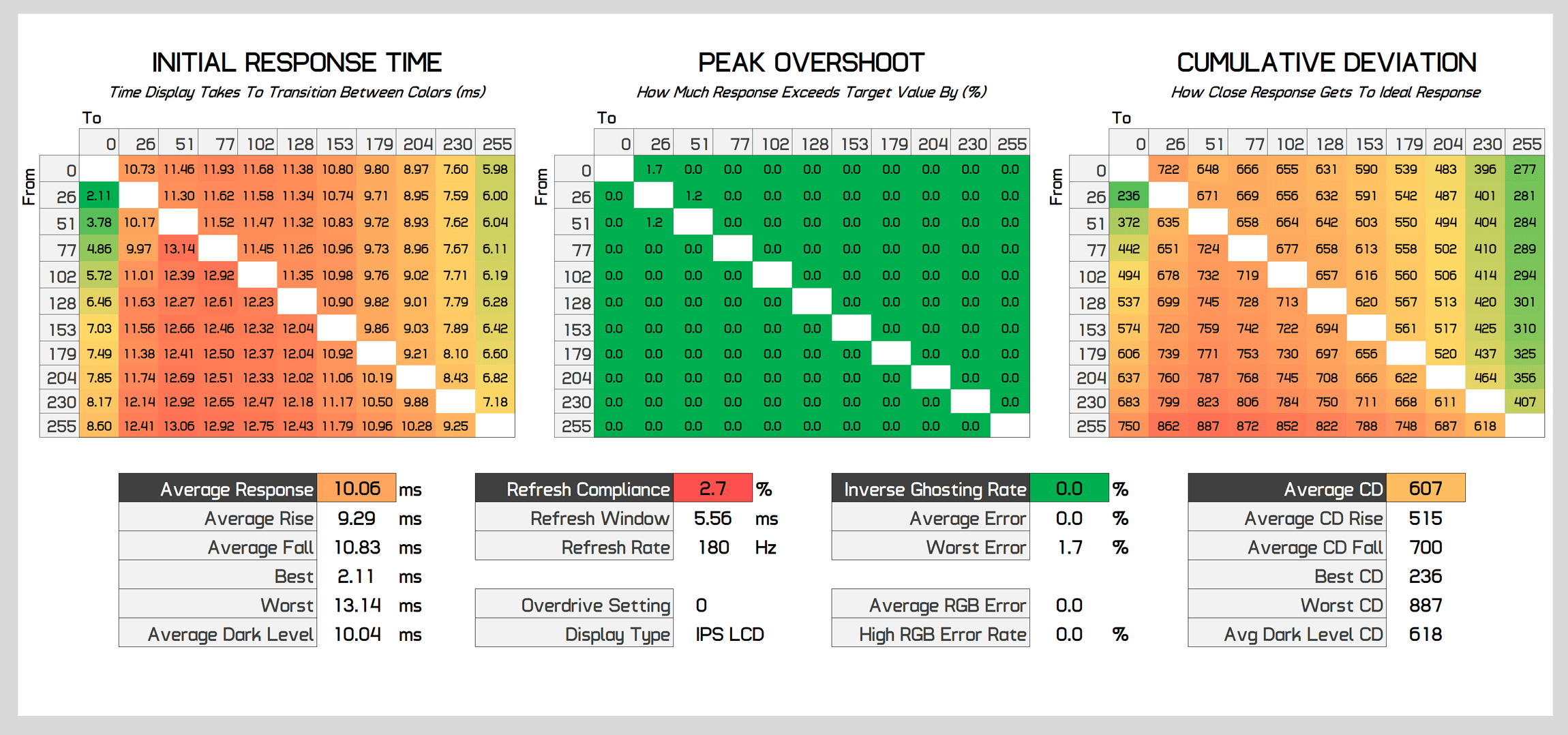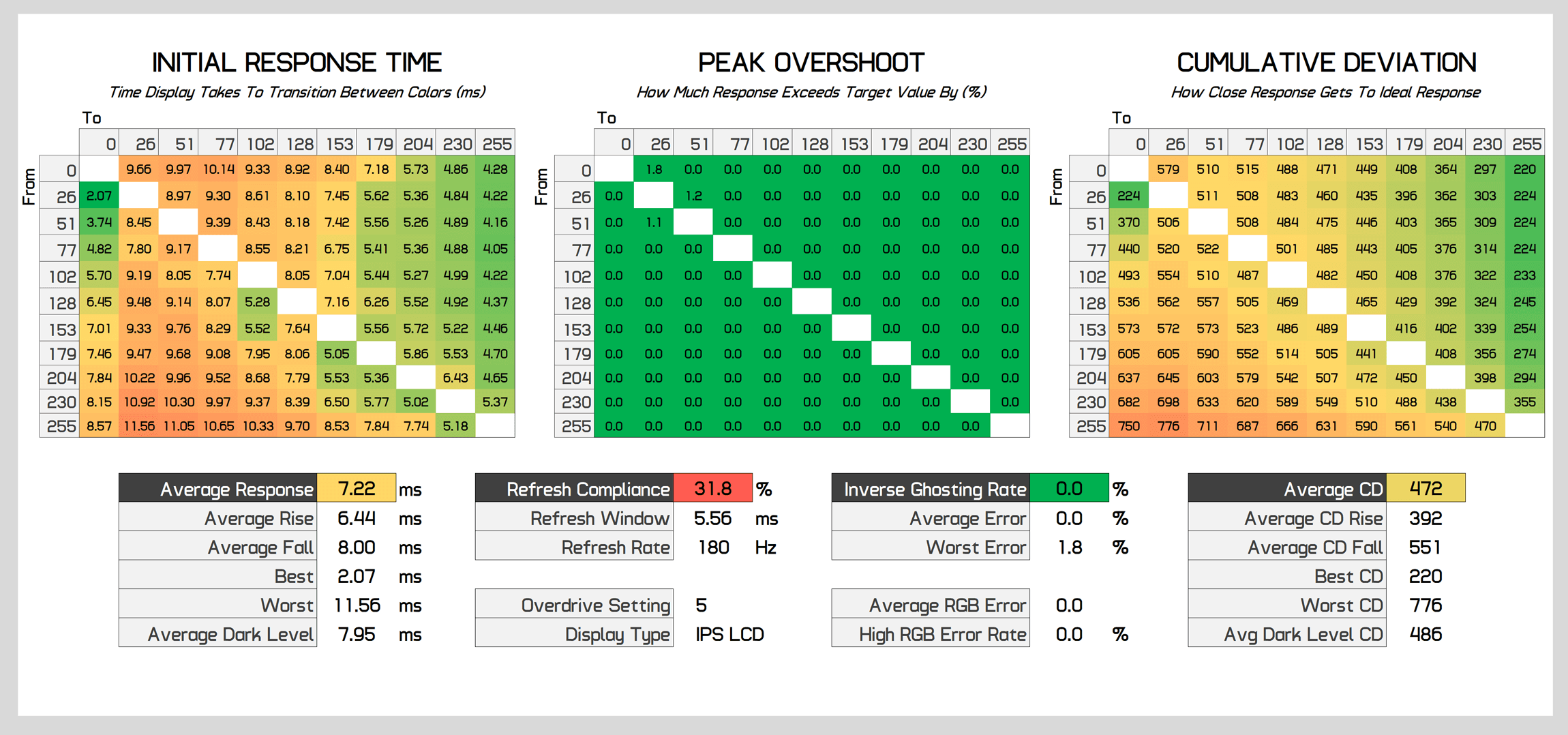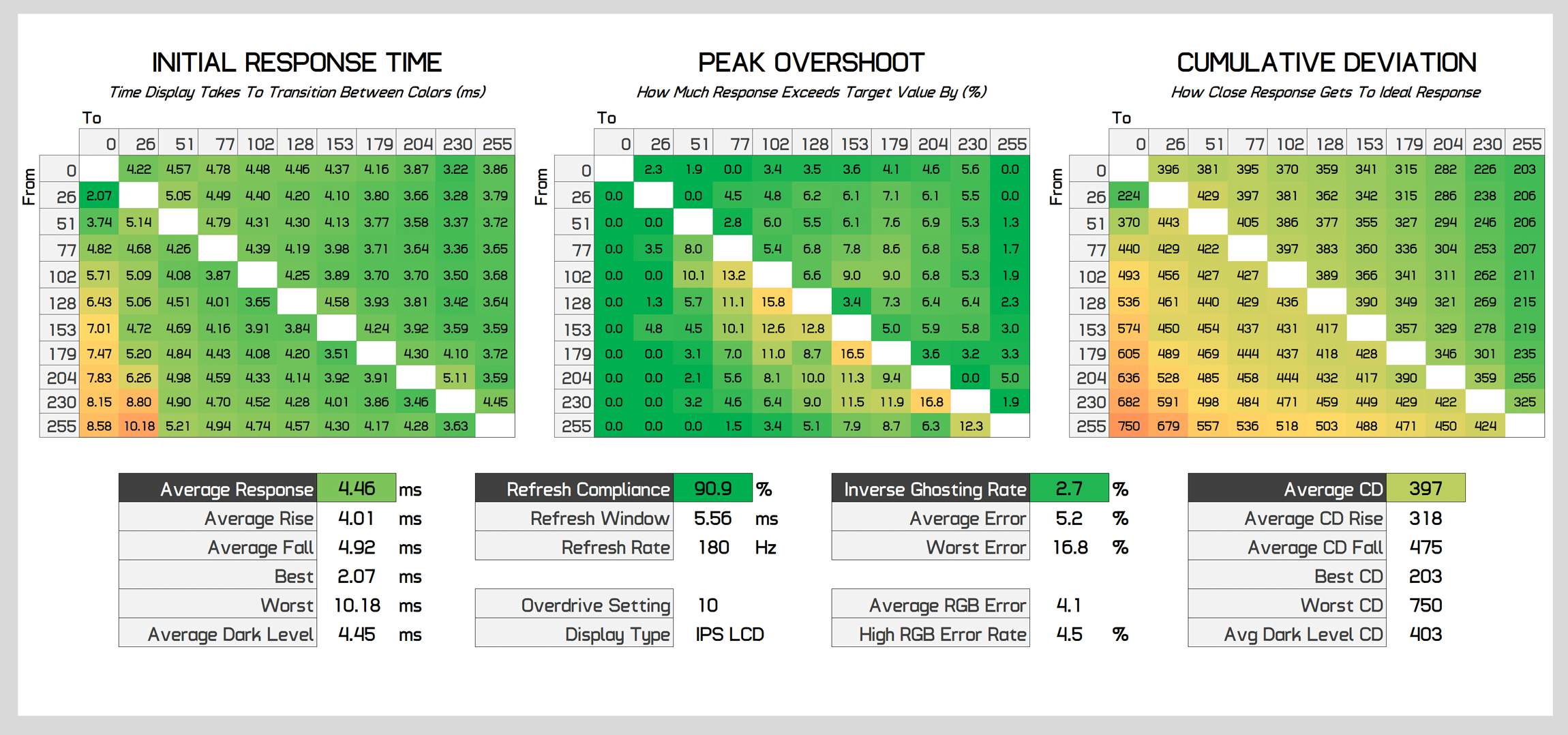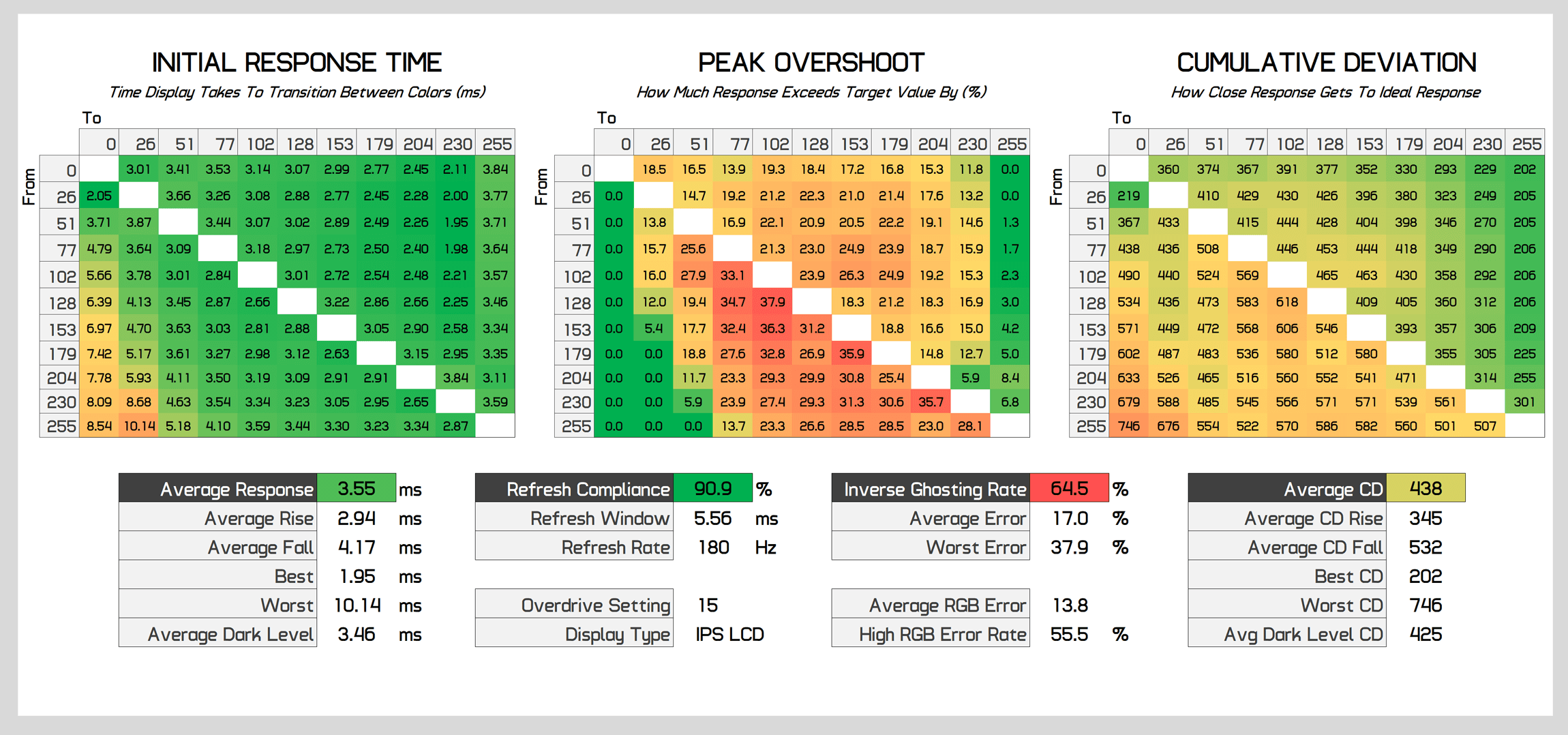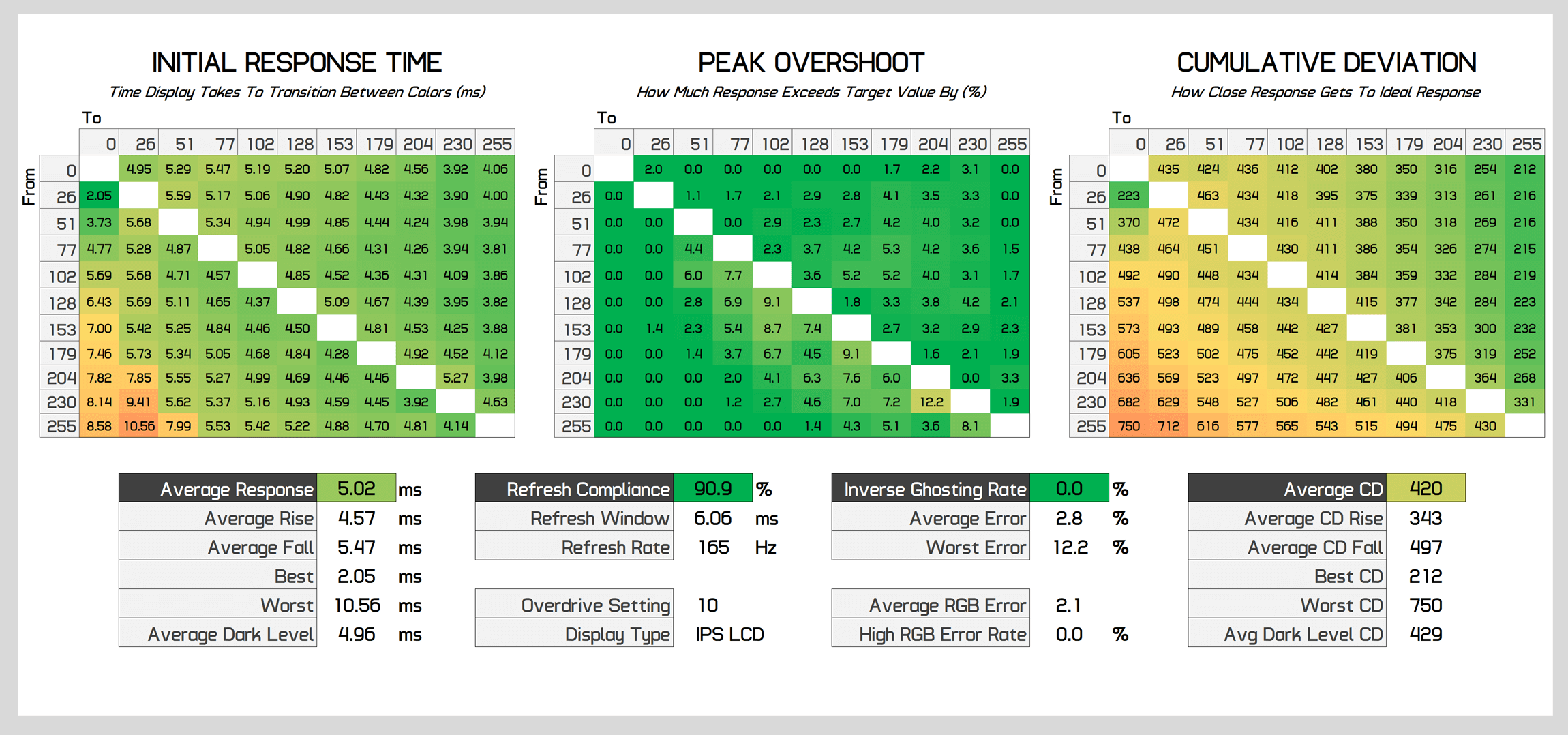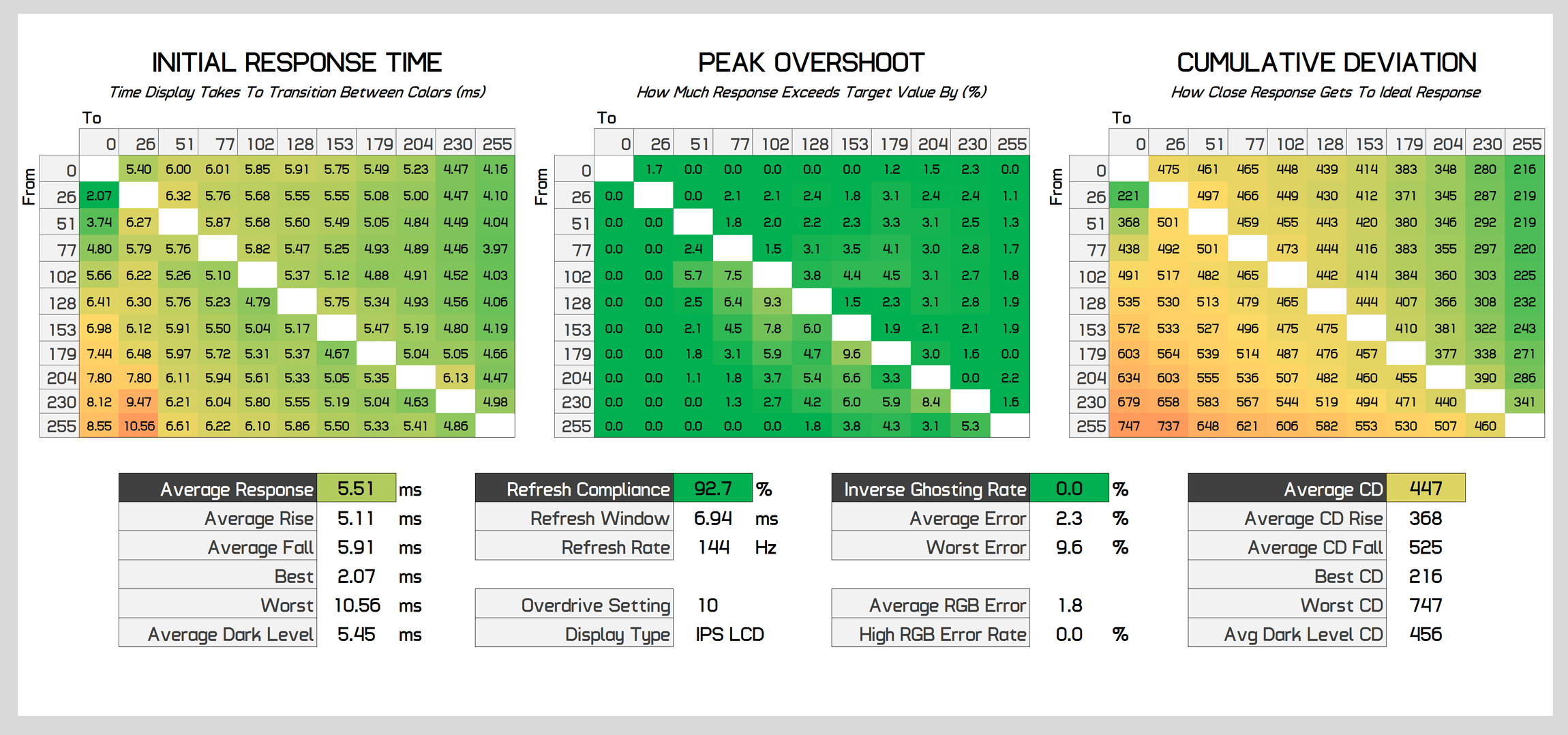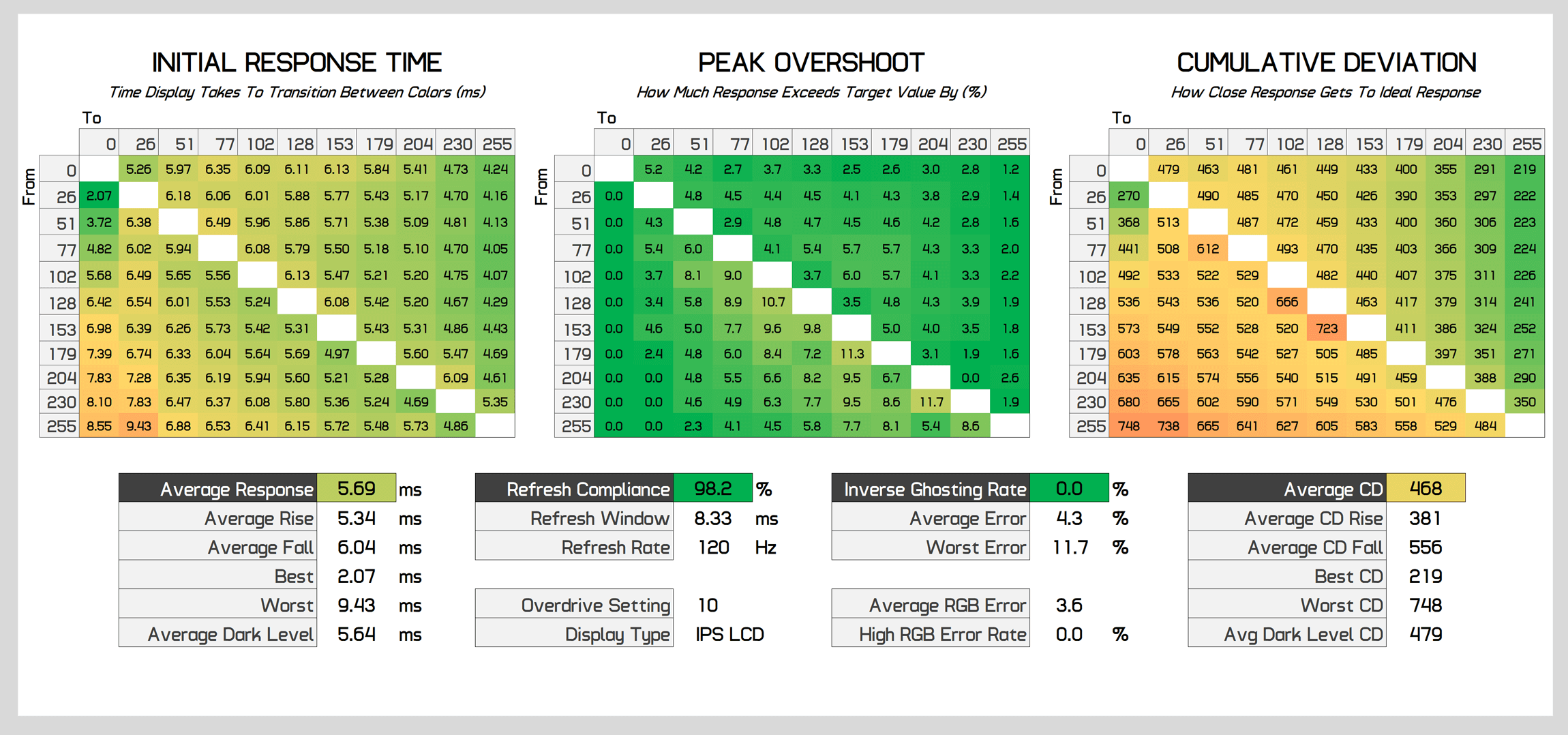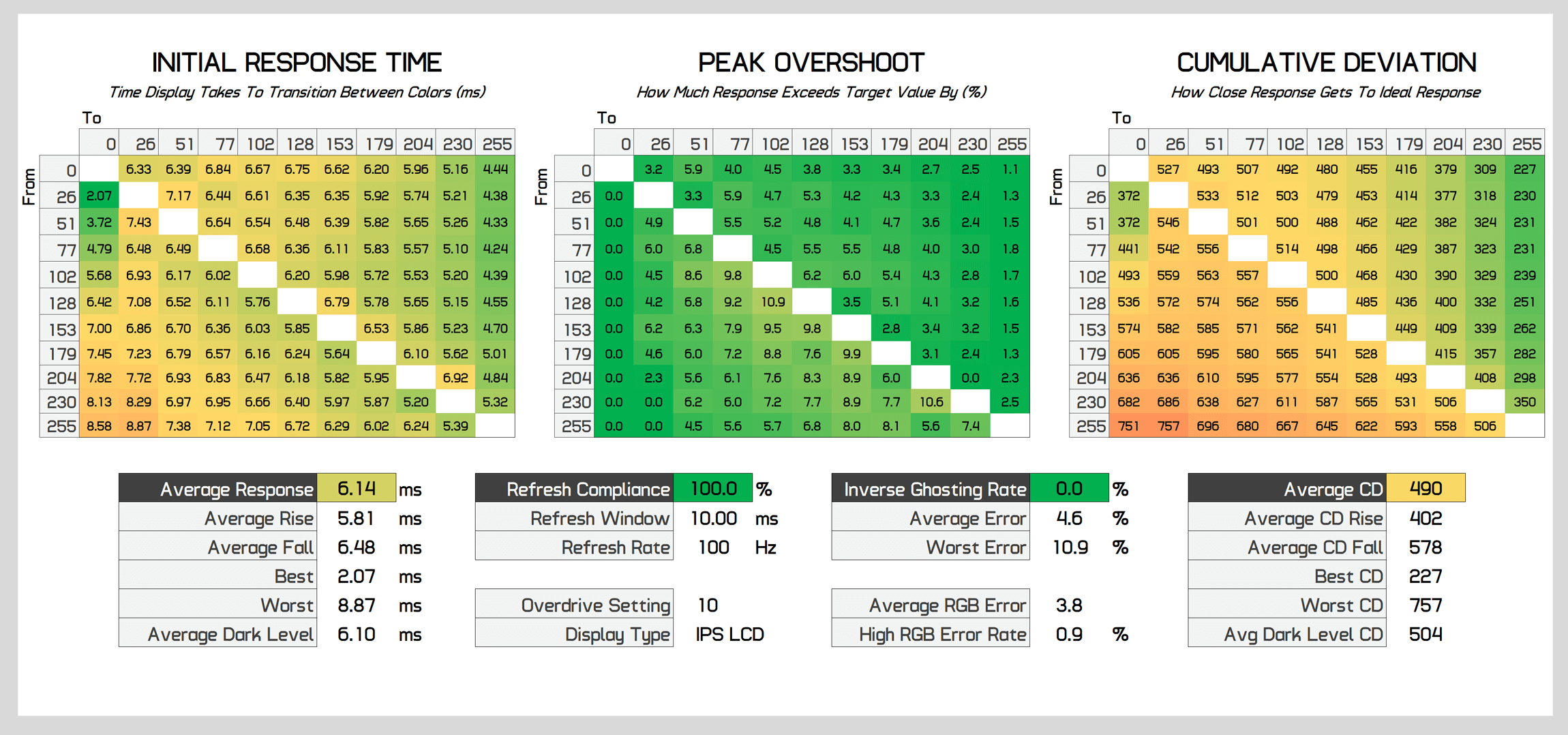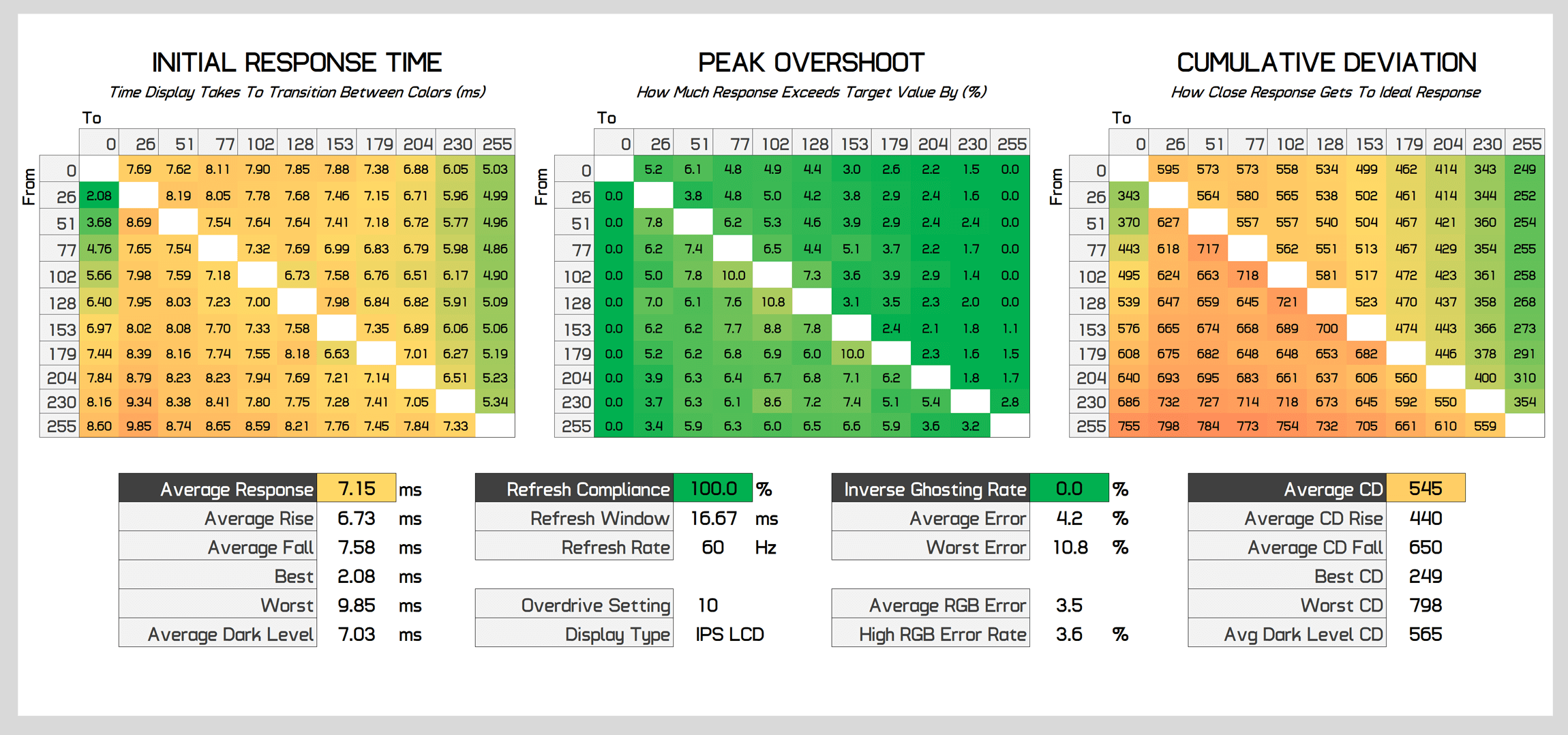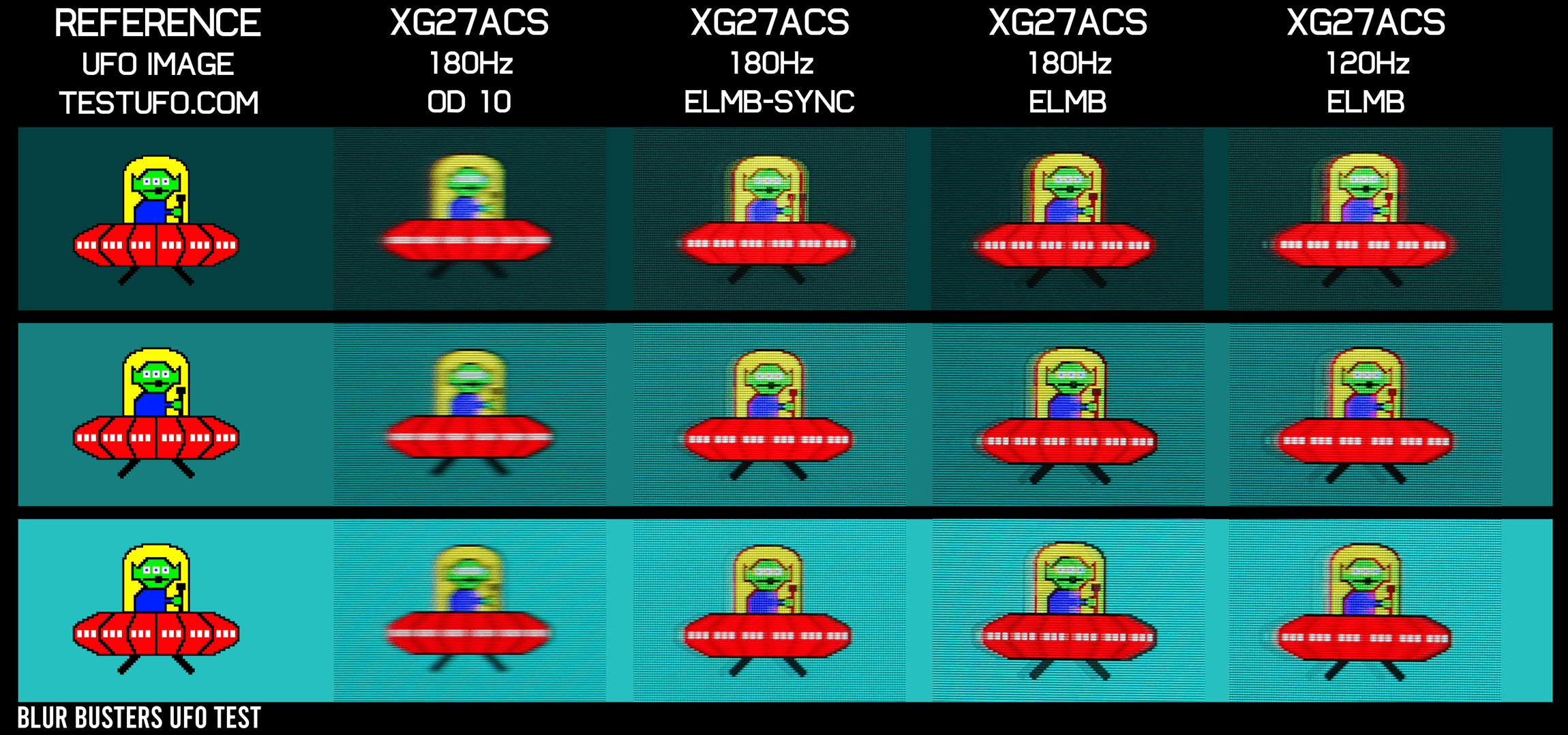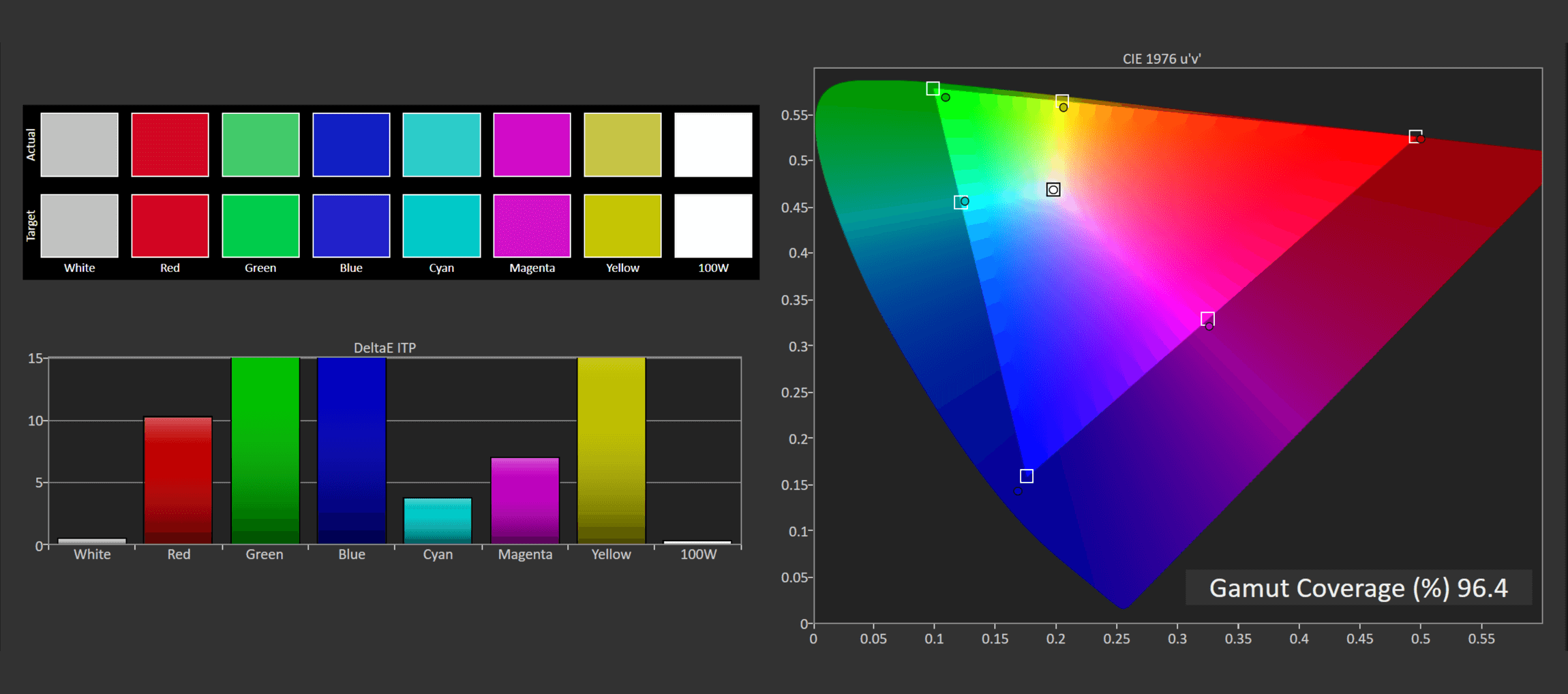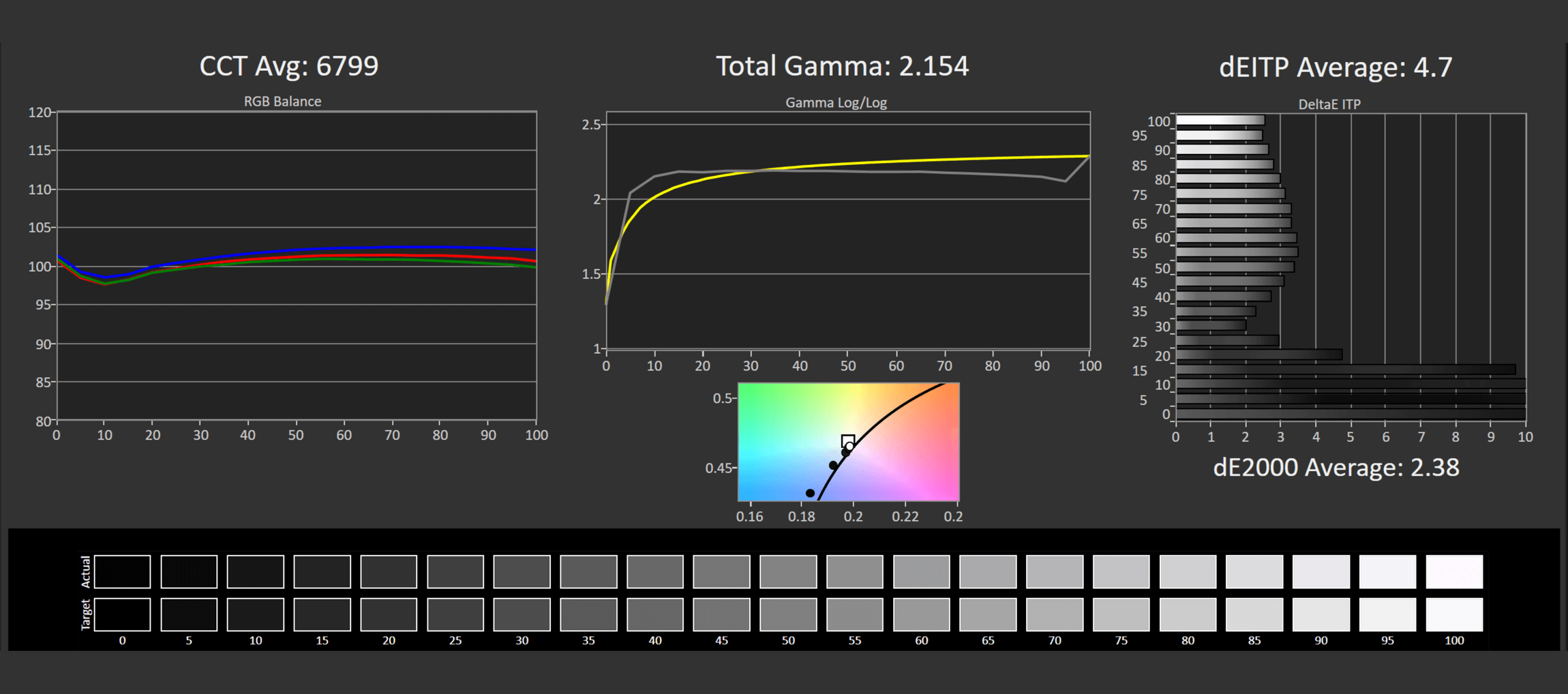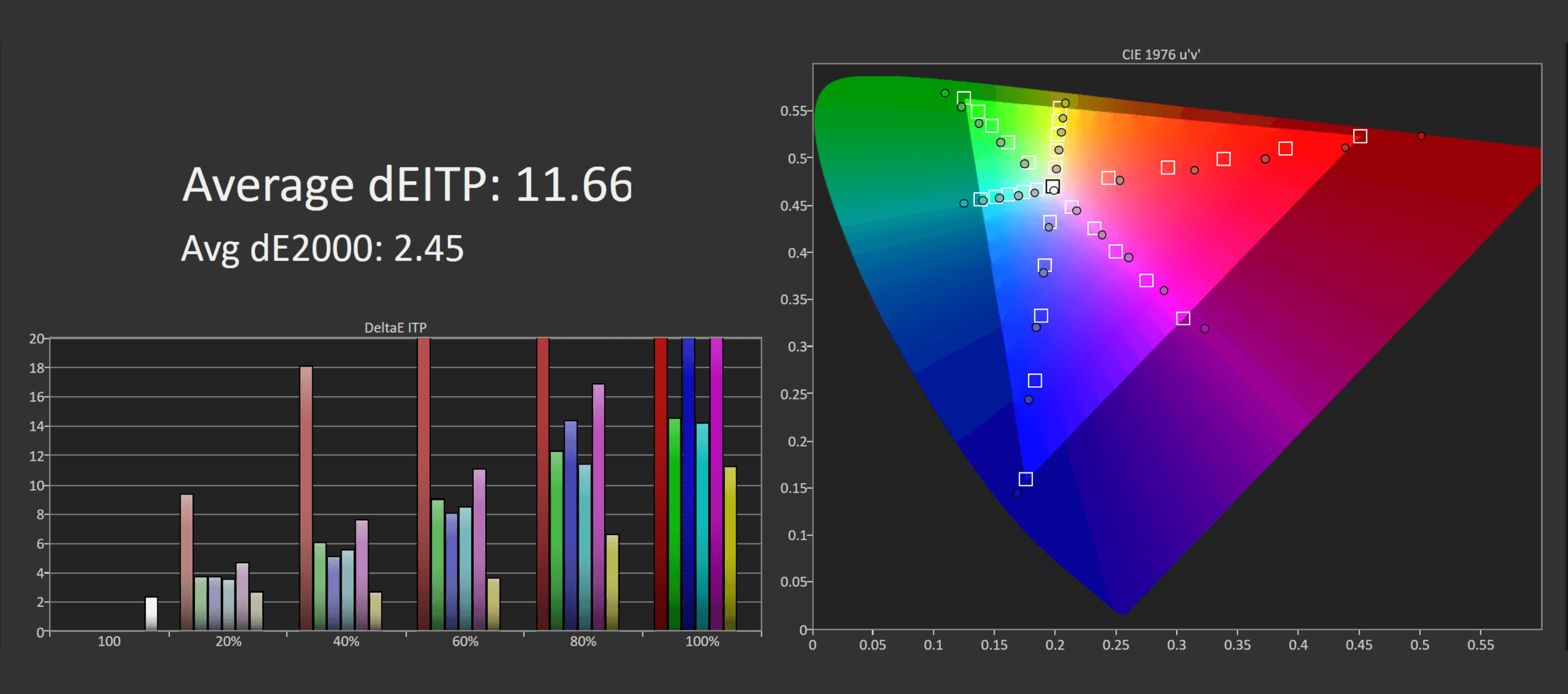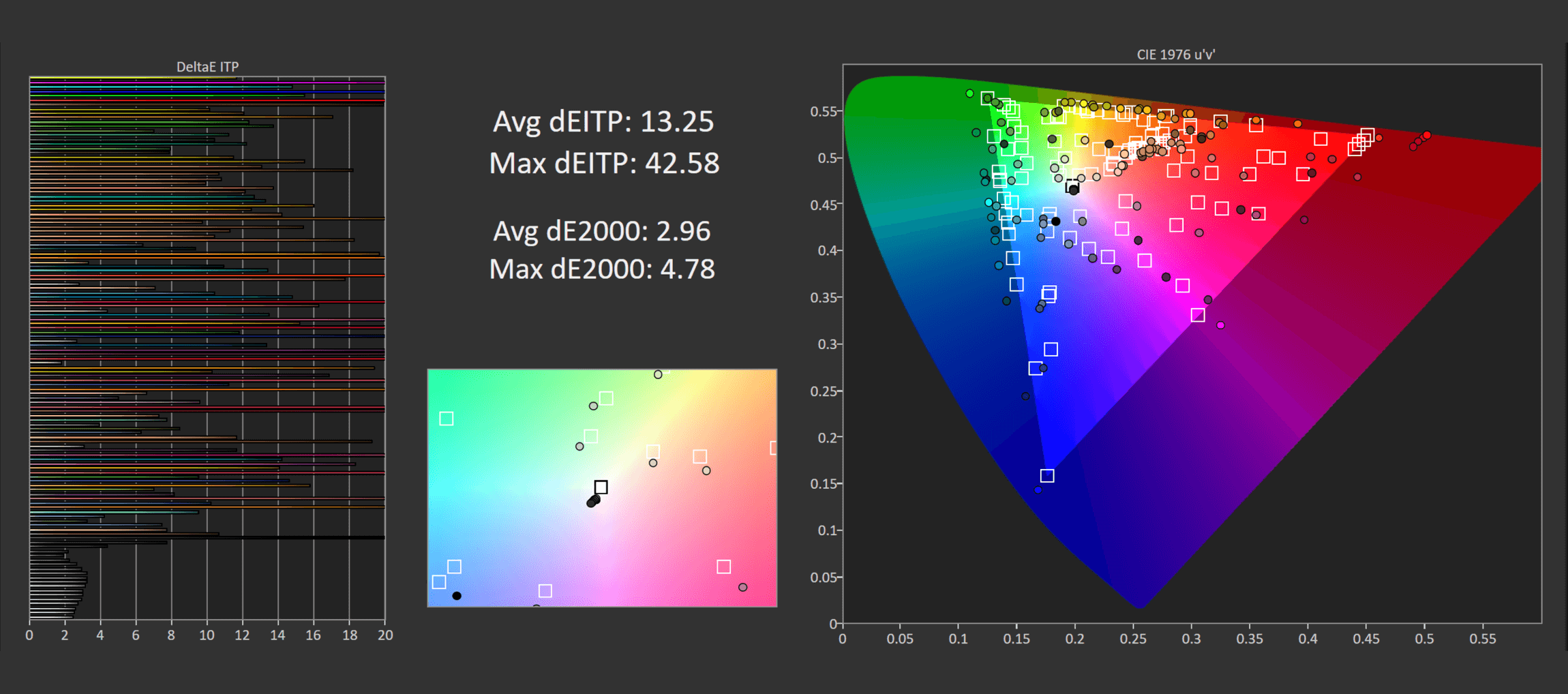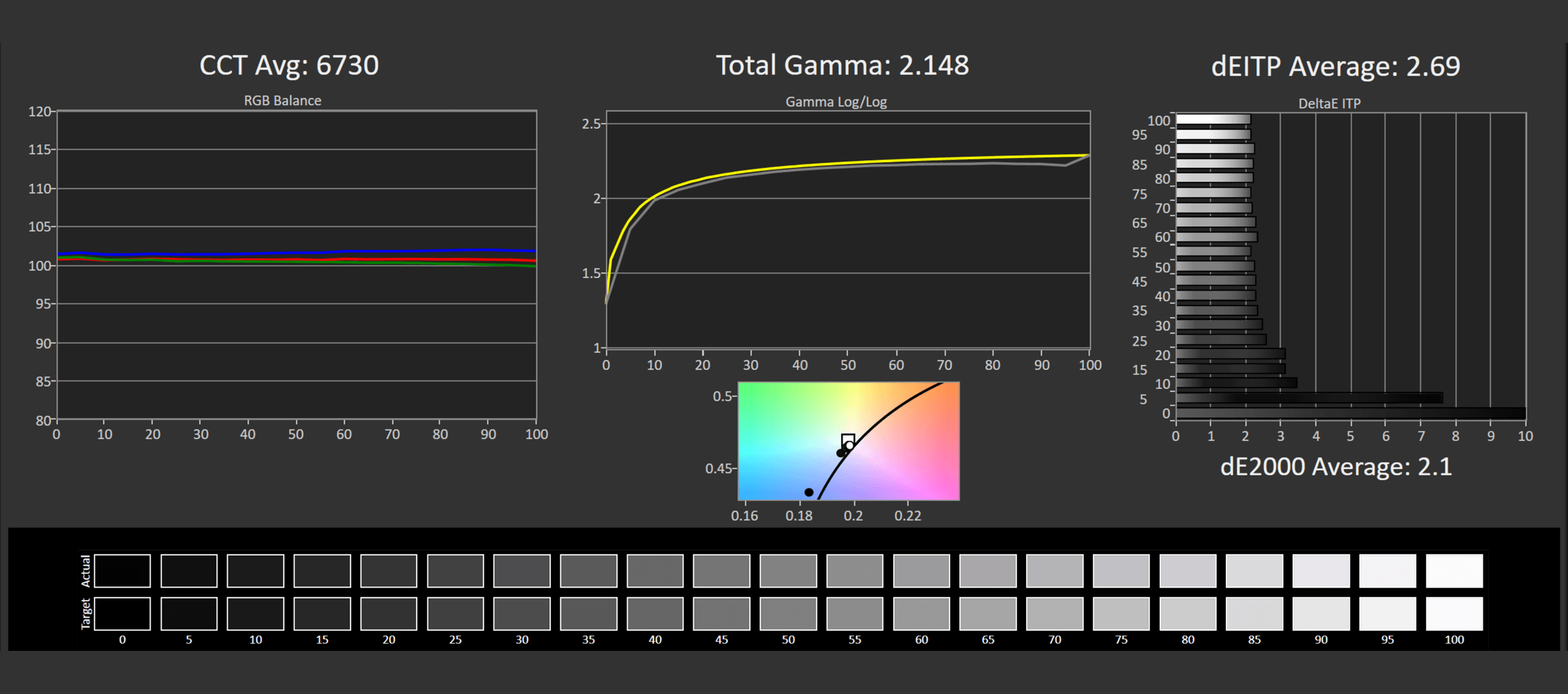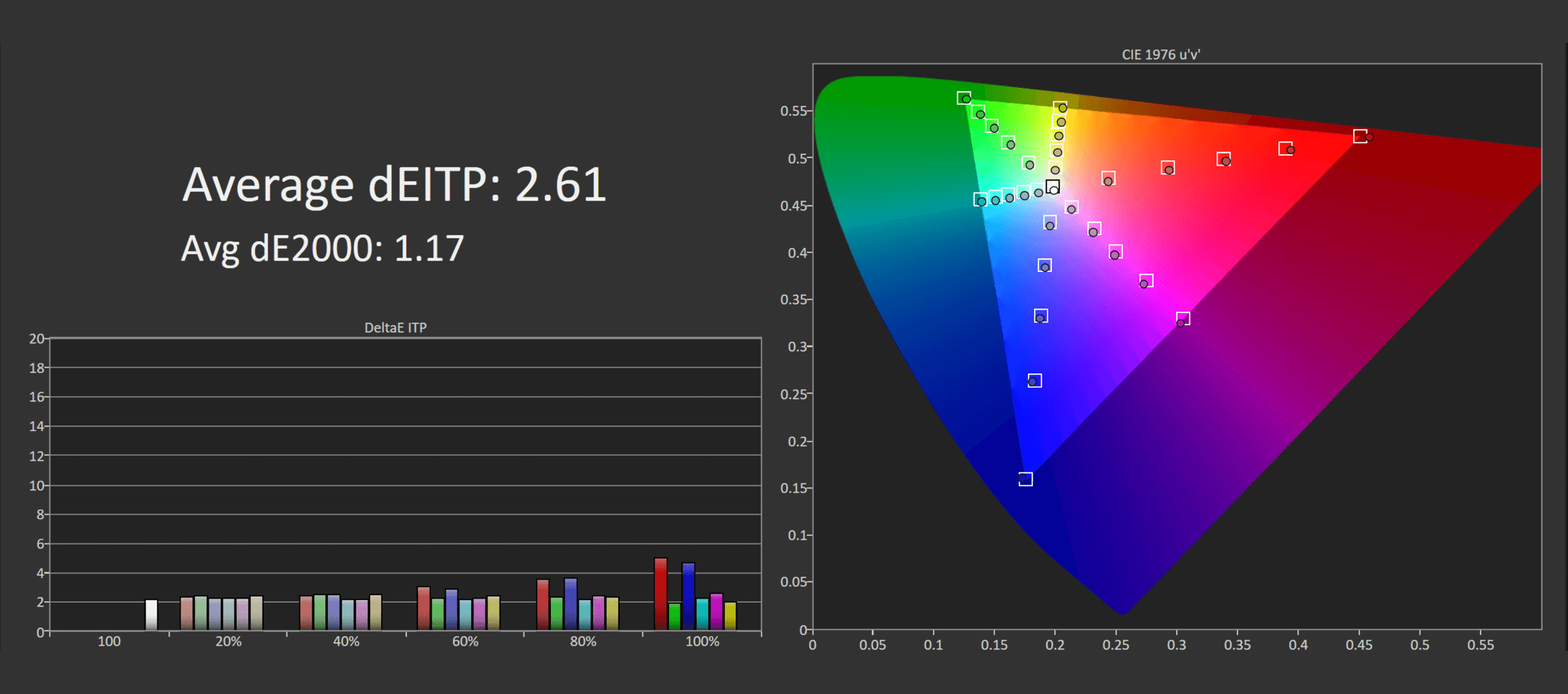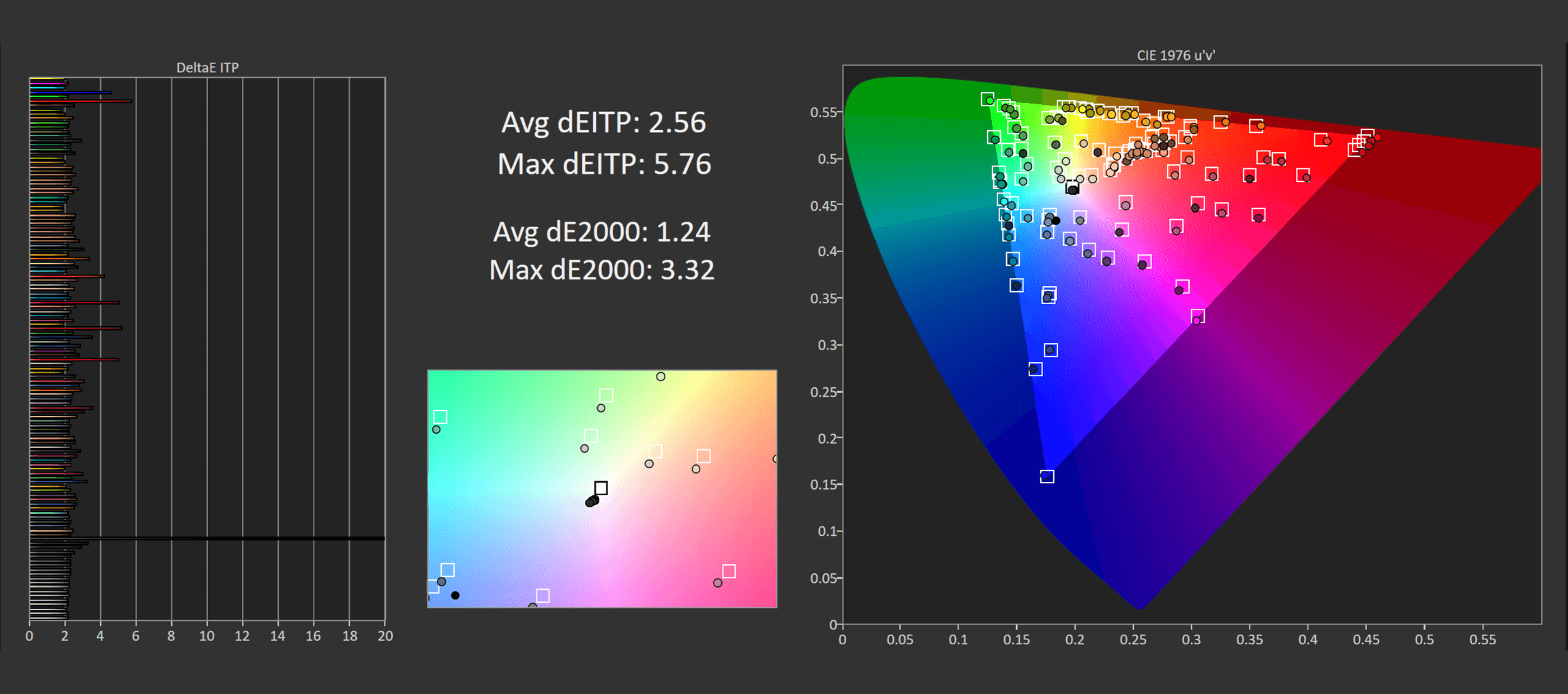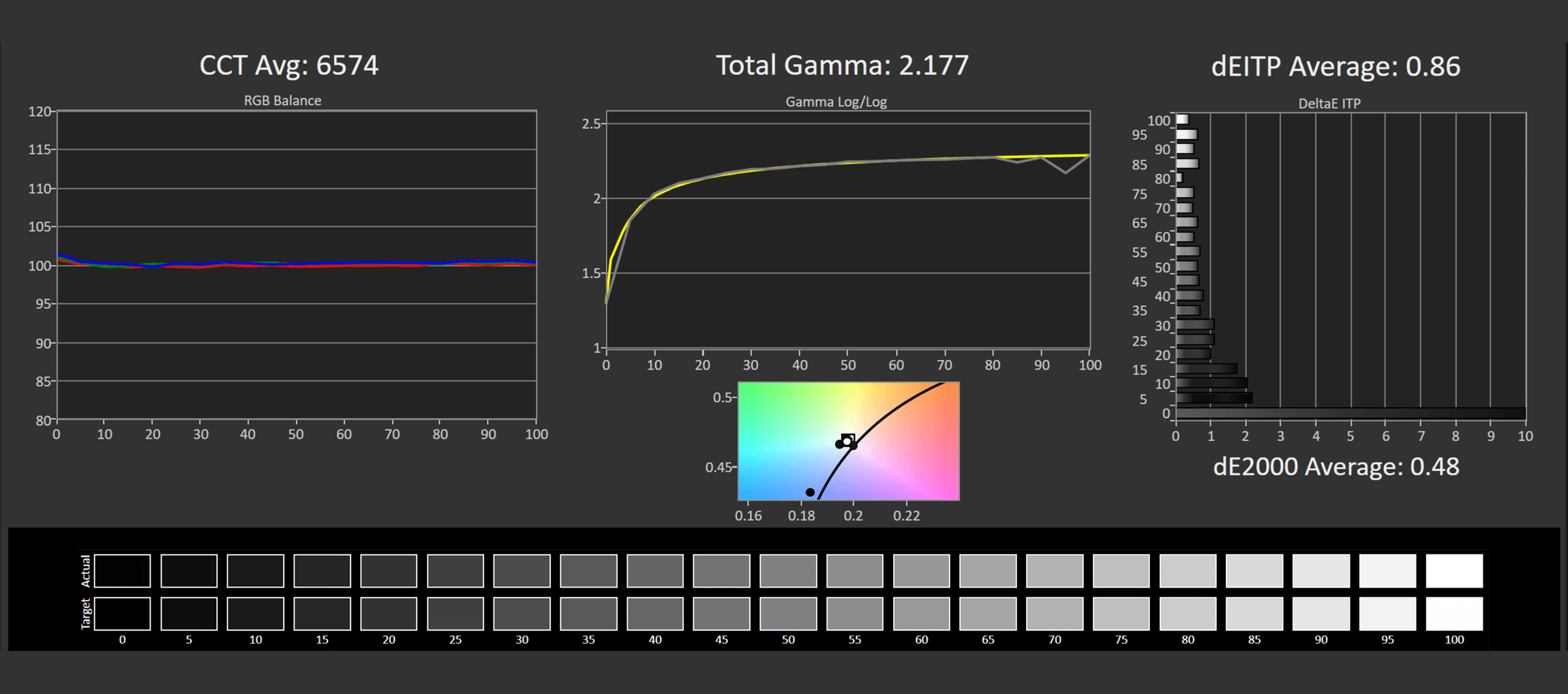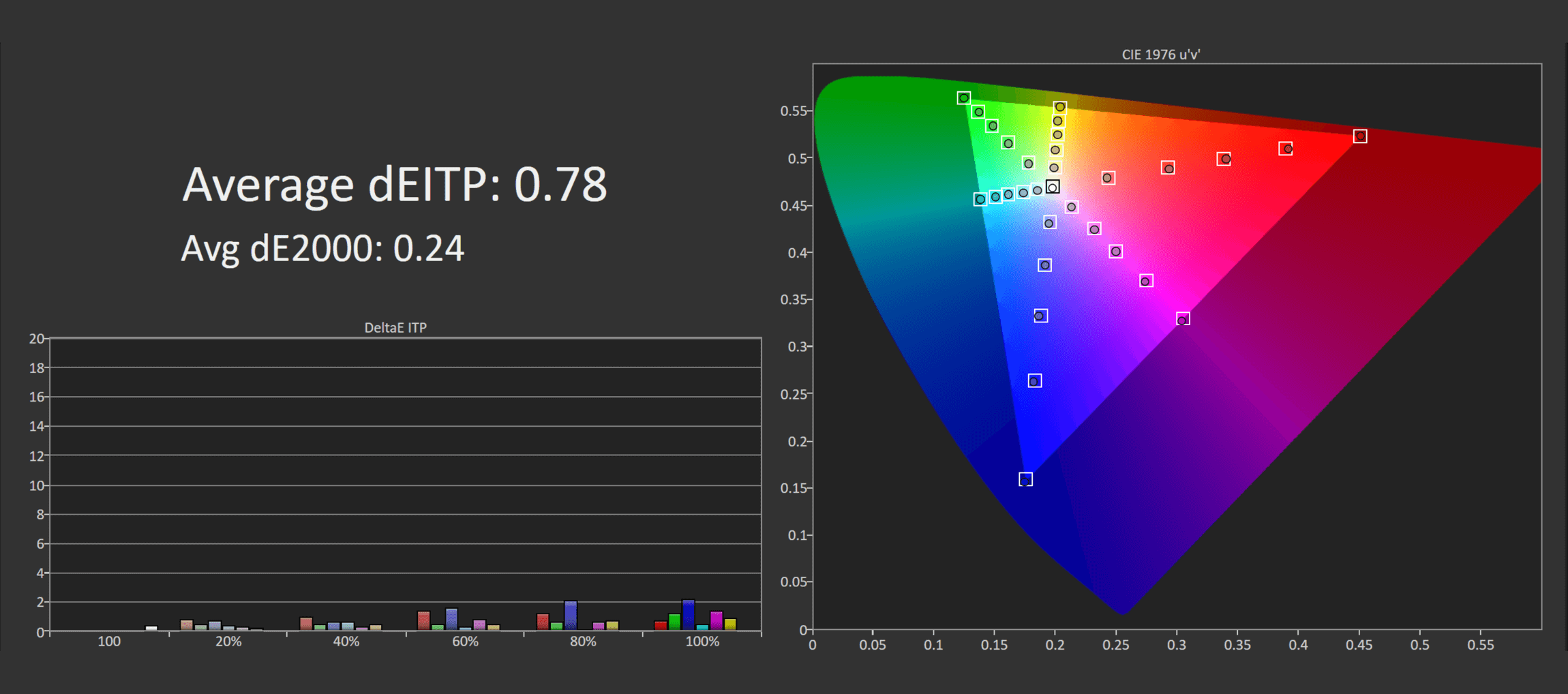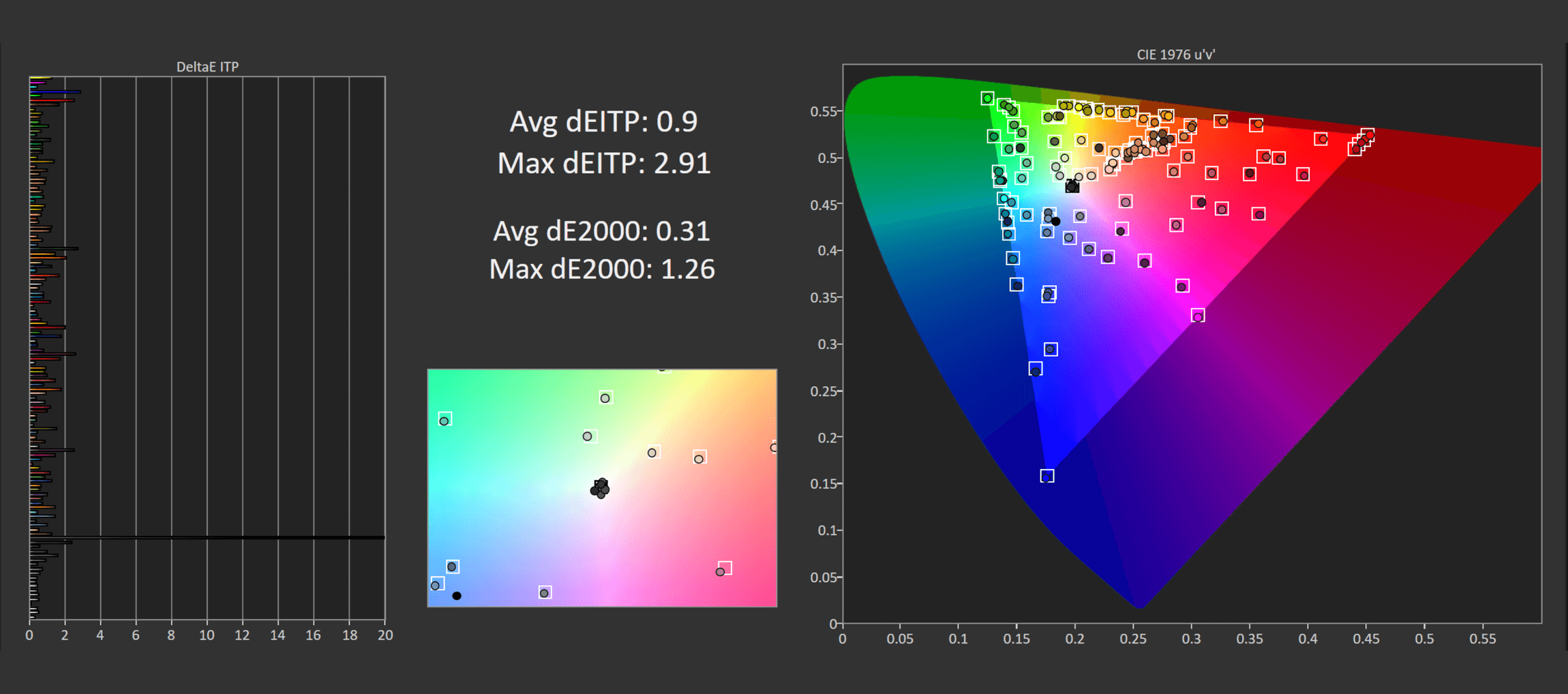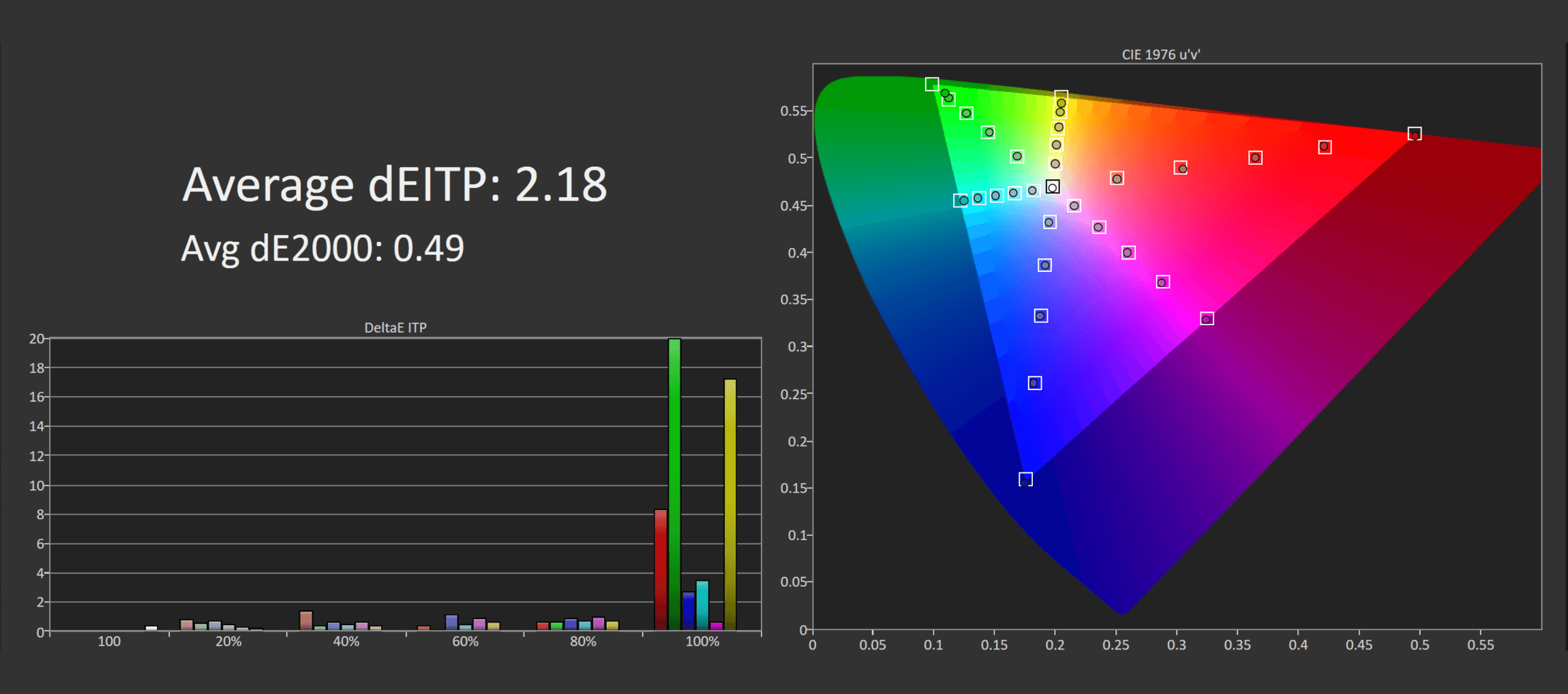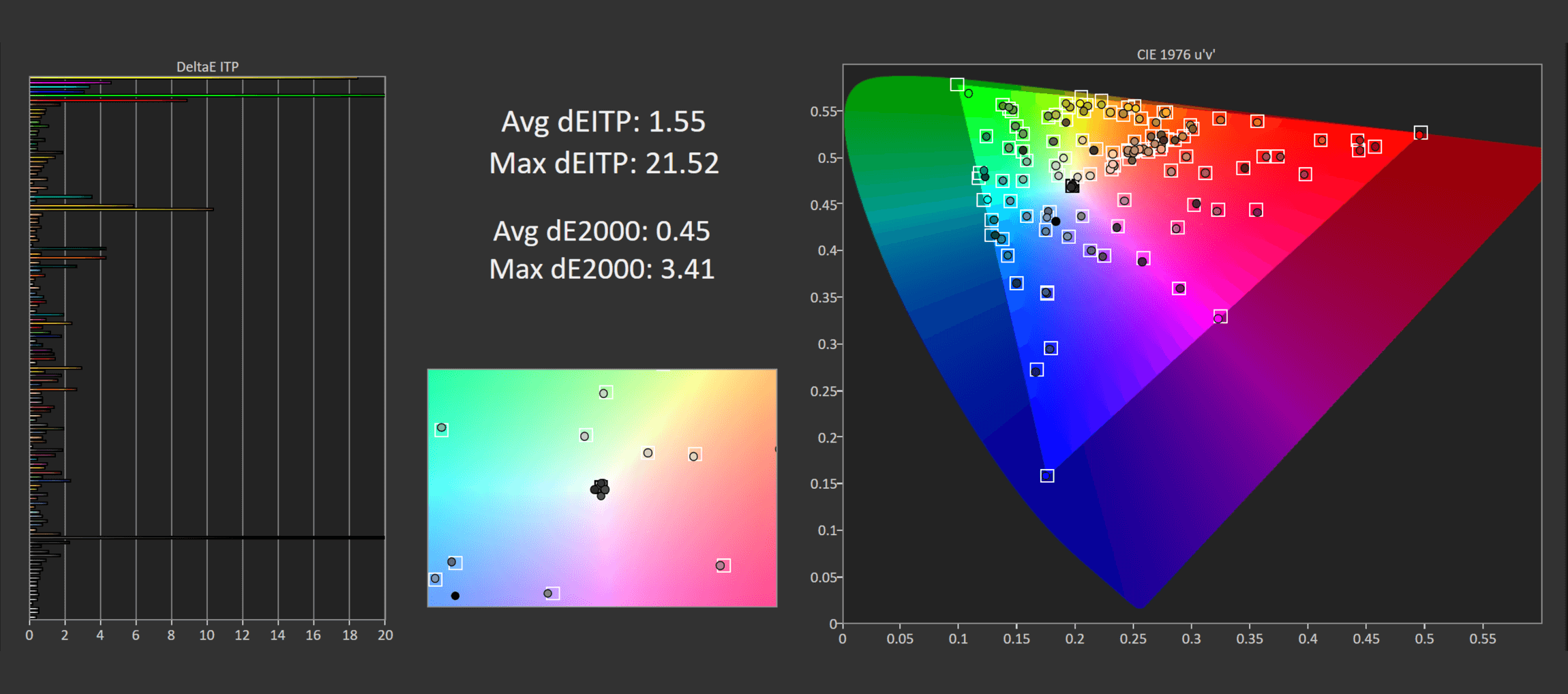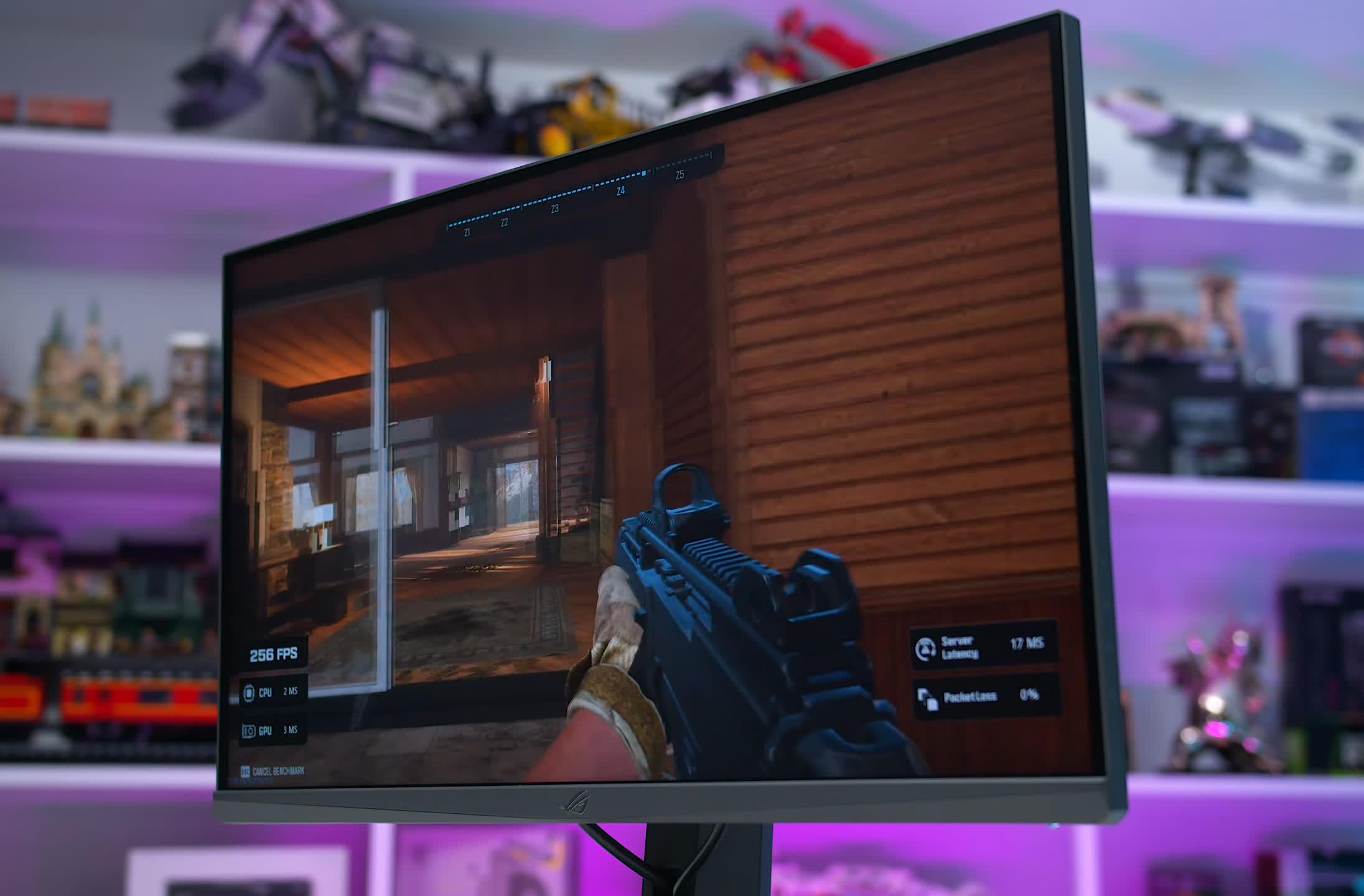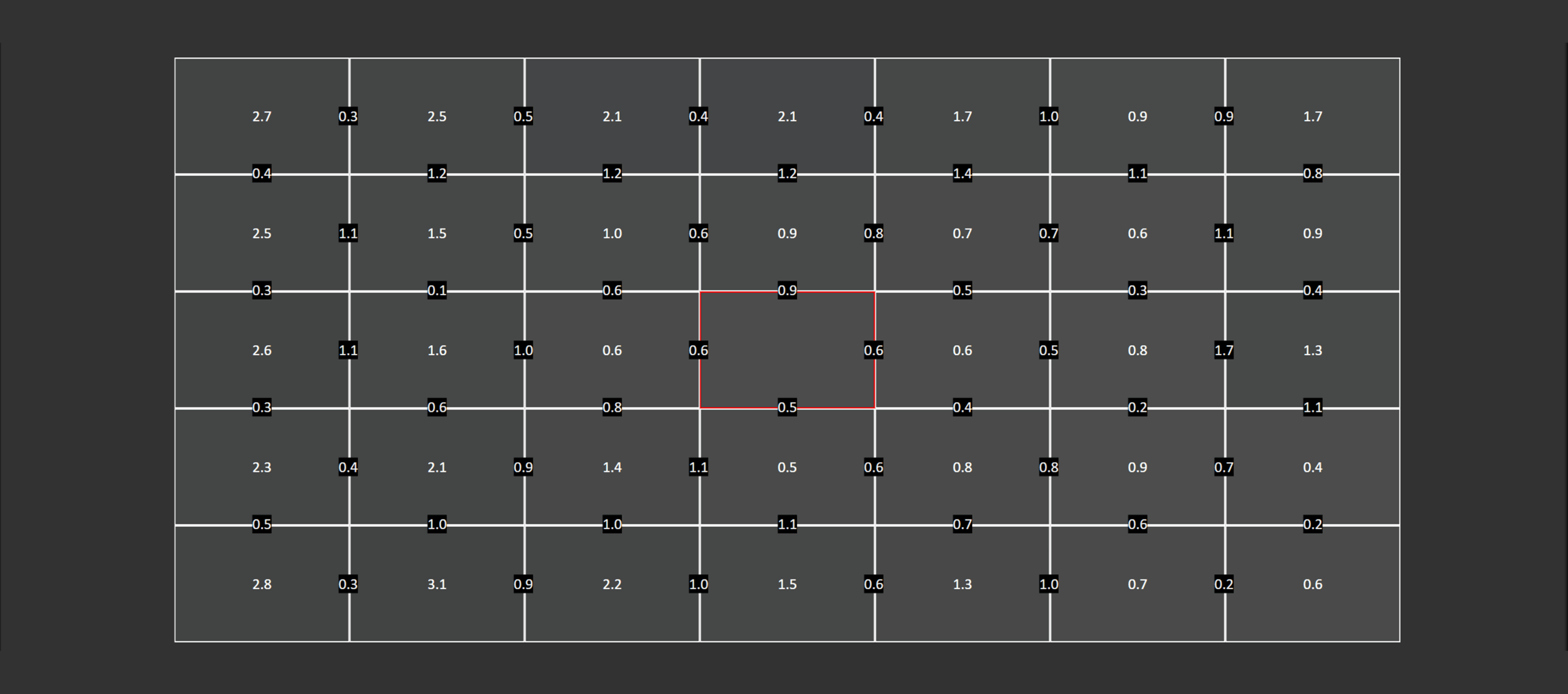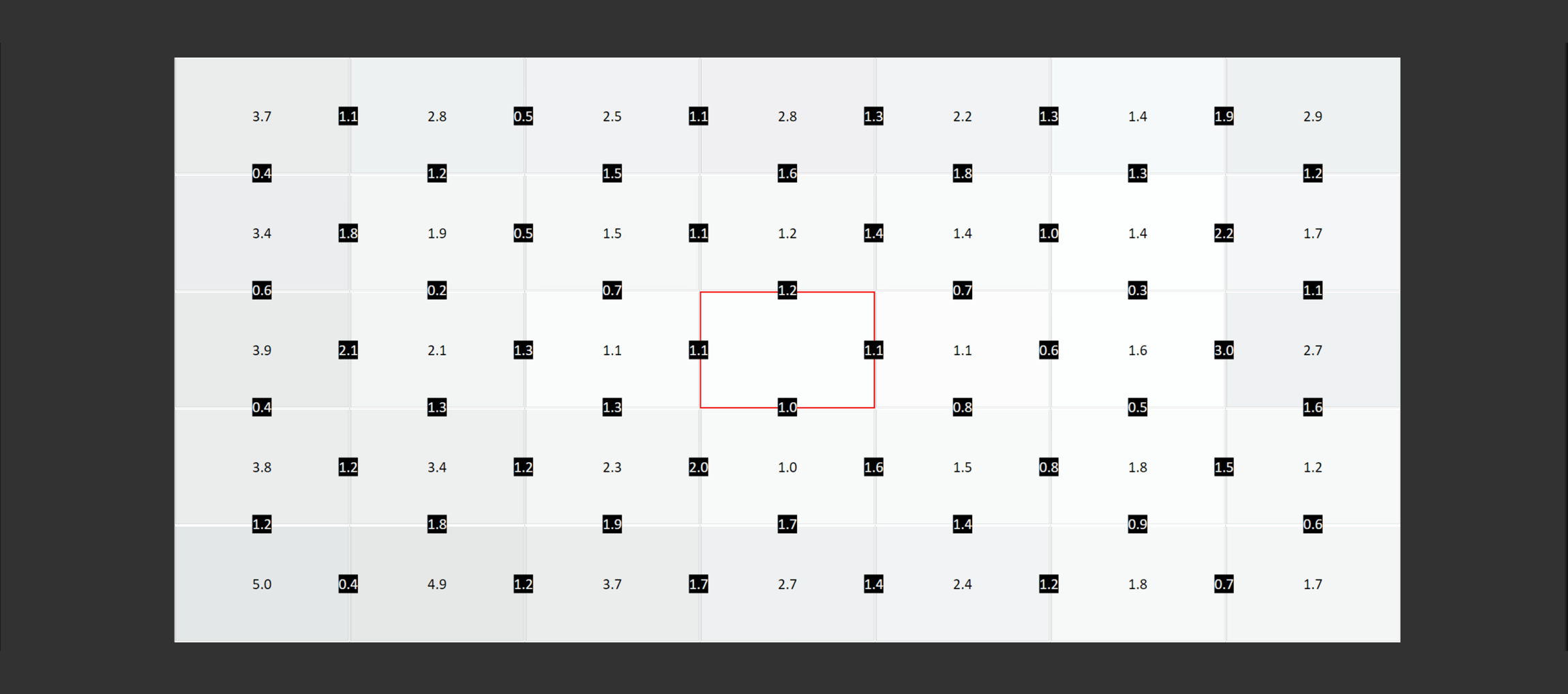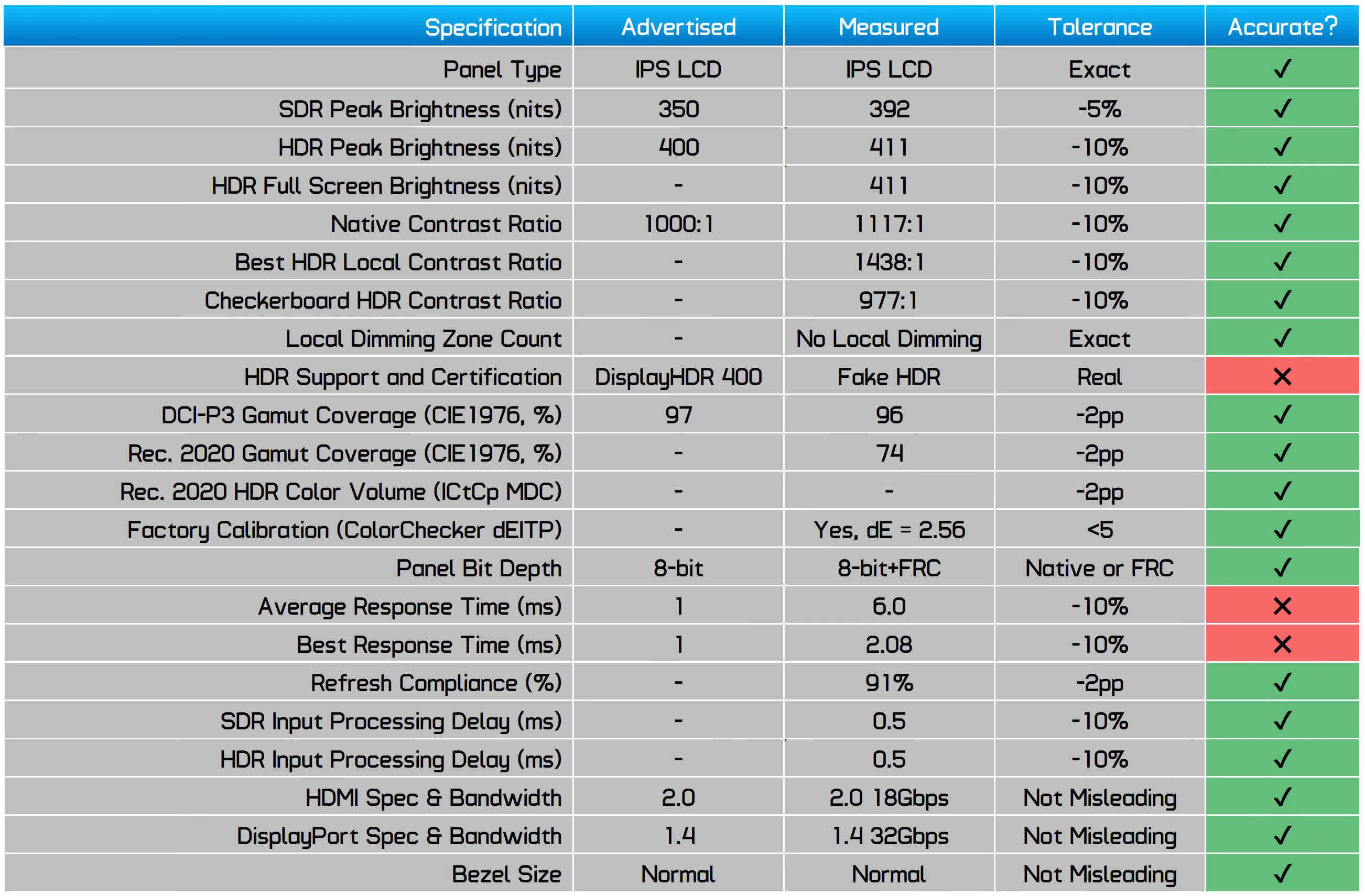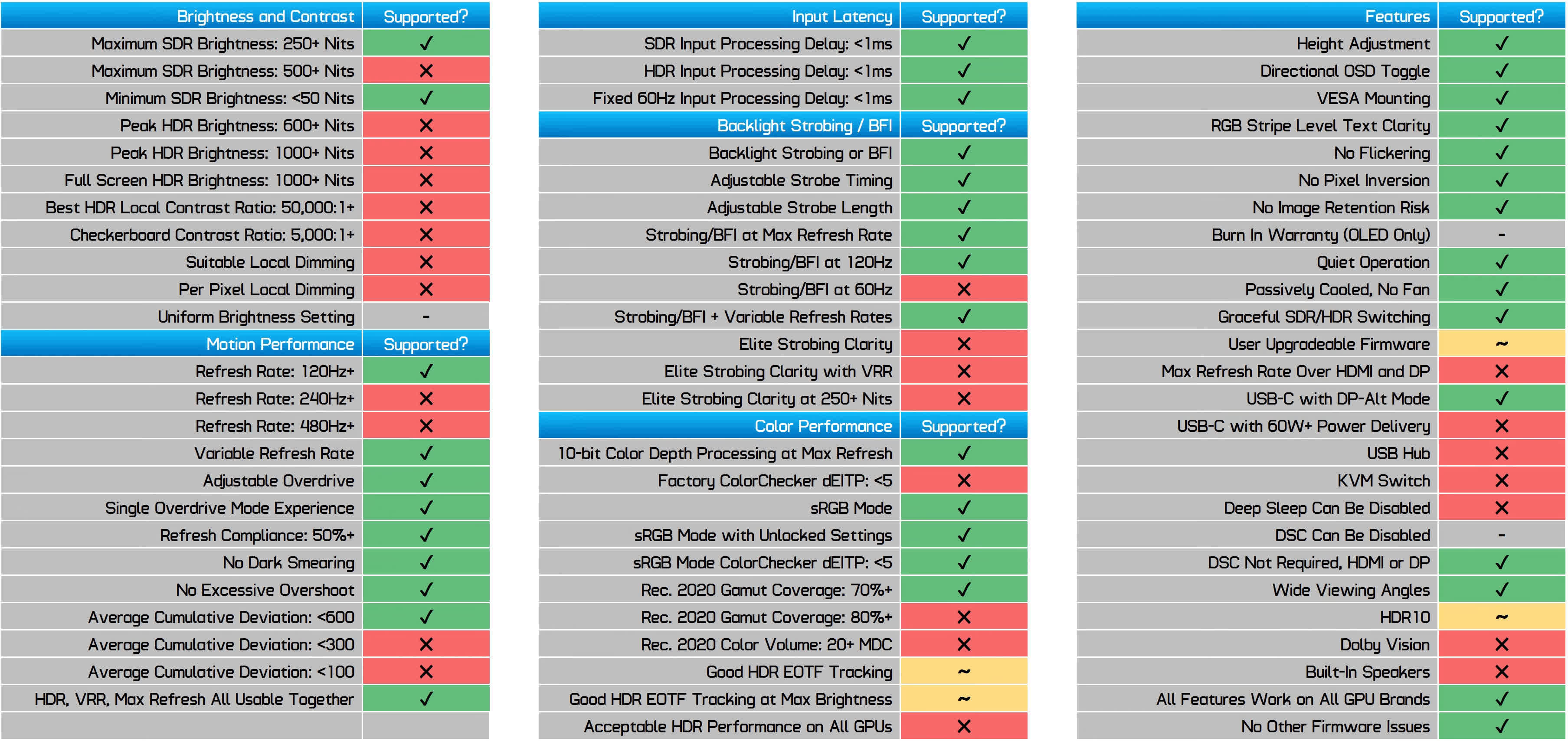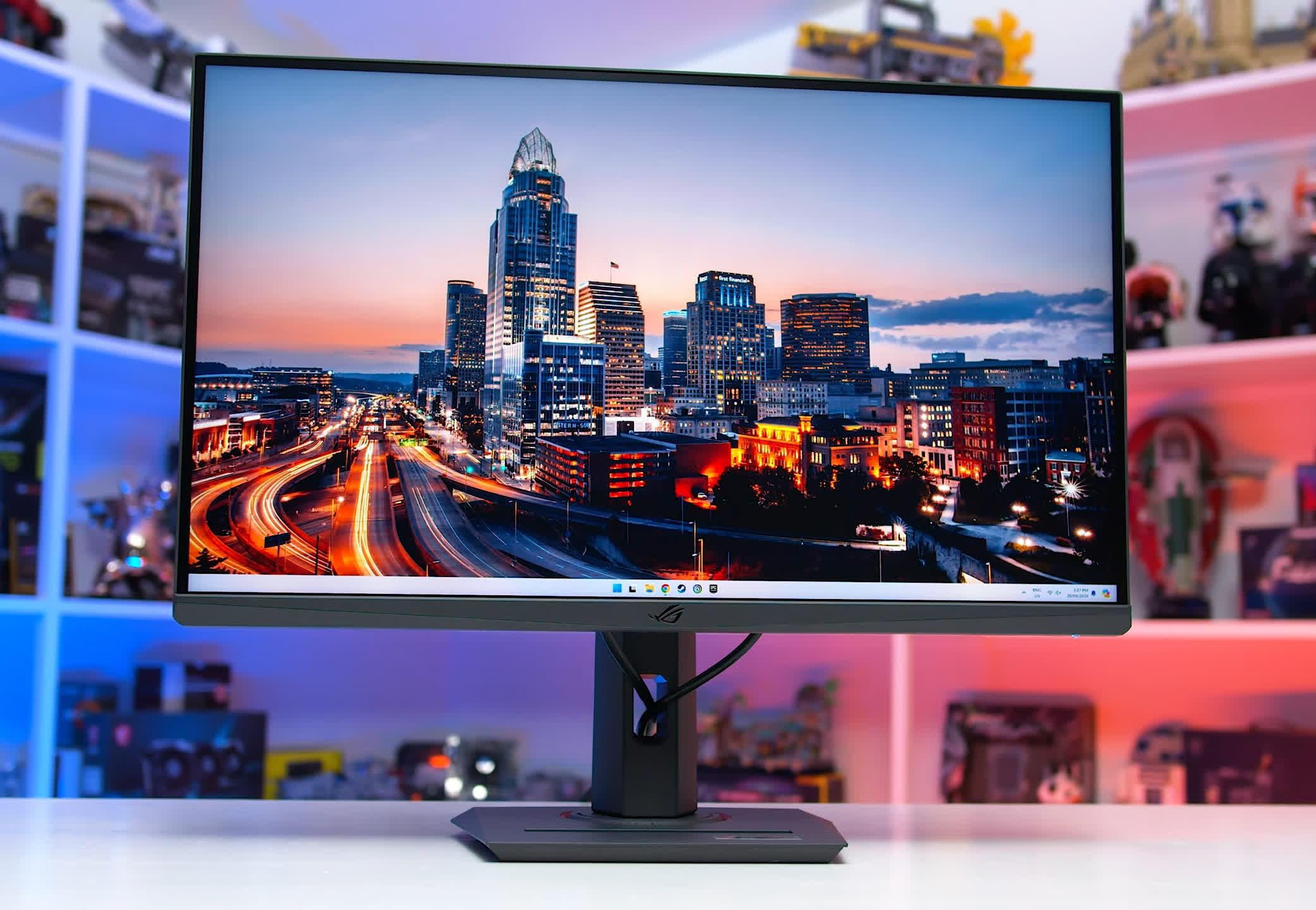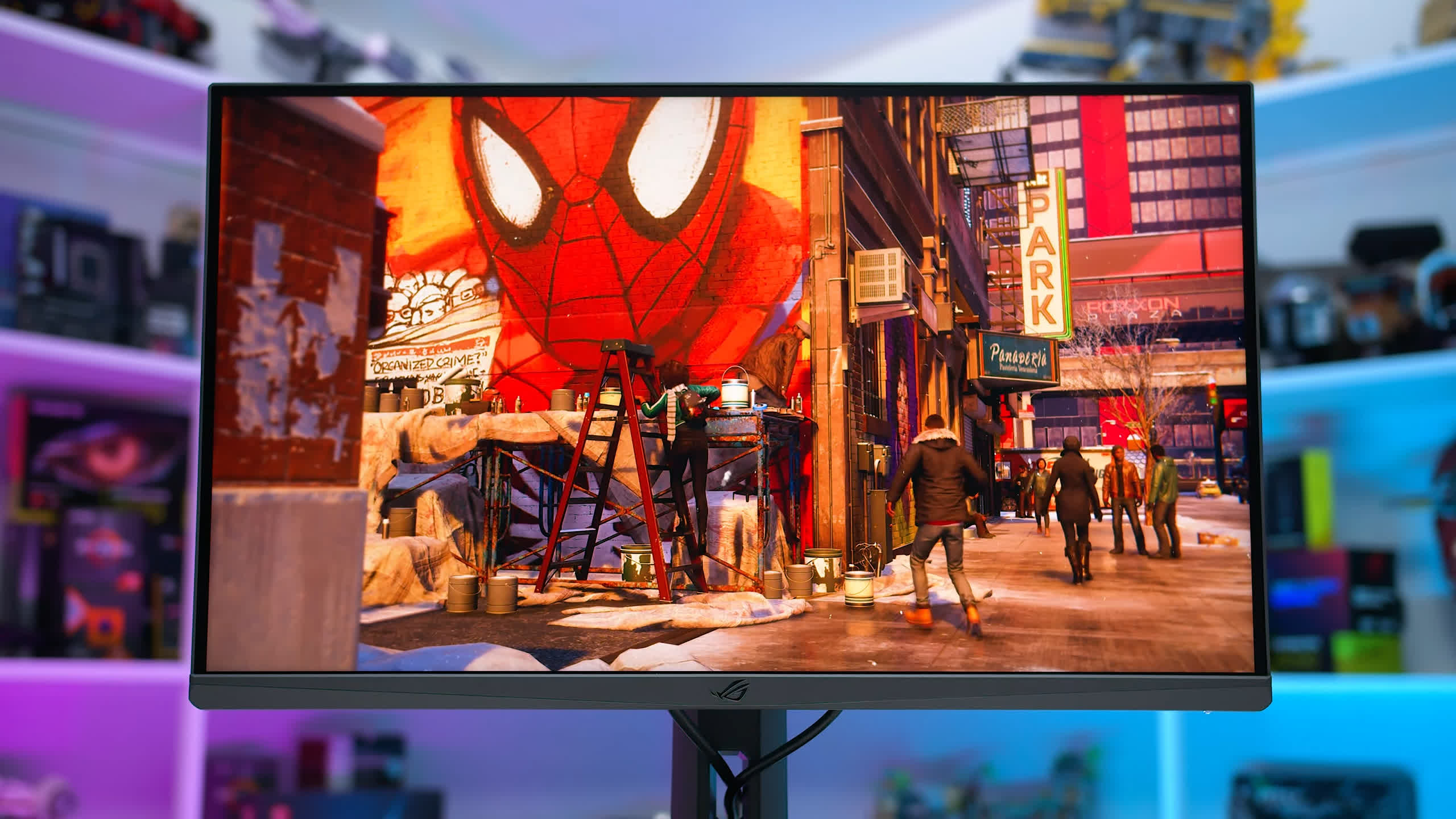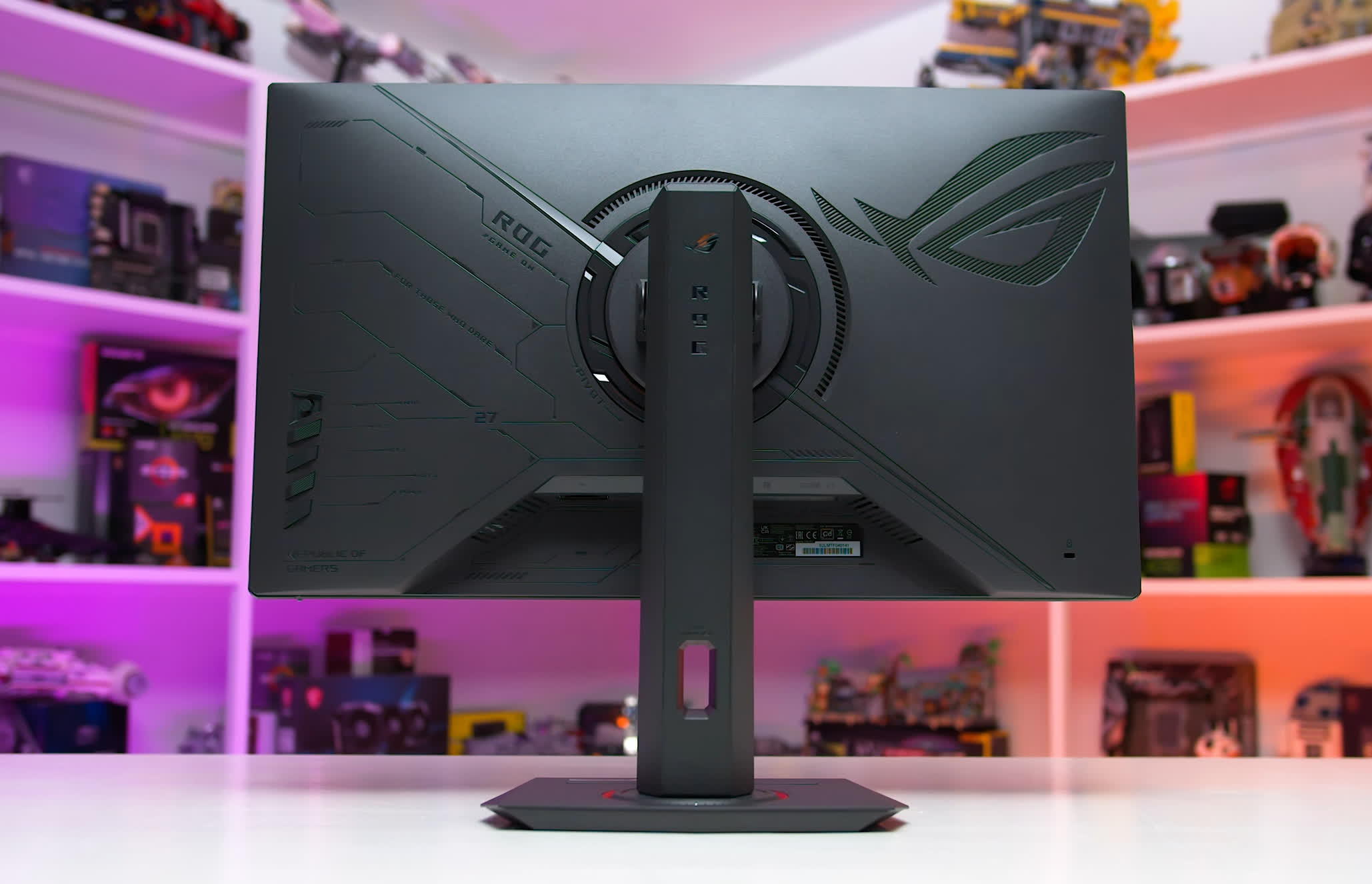The Asus ROG XG27ACS is an affordable 1440p 180Hz gaming monitor, which means today we are not reviewing another OLED gaming monitor, but a $290 LCD targeting mainstream gamers.
And while there's nothing particularly groundbreaking about the hardware here, we are always on the hunt for new bang-for-buck options that improve upon existing offerings.
Features and Design
The XG27ACS packs a 27-inch 1440p 180Hz IPS LCD panel with a pretty typical feature set, including adaptive sync variable refresh rates and ELMB backlight strobing. This display isn't truly HDR capable despite advertising HDR, with no local dimming functionality.
The design of this monitor is similar to what we've seen from Asus in the past, minus the RGB LED lighting as this is a more budget-friendly product. The front includes three slim bezels and a chin along the bottom edge, while on the rear you'll find typical 'gamer' styling with vents, textures, and a large ROG logo. We tend to prefer a more minimalist design, but all this stuff is on the back, which is pretty easy to hide.
The stand features a small squarish base with a cutout for slotting in your phone. However, our Galaxy Z Fold 5 doesn't fit, though it is a thick device. The pillar has a cutout for cable management and supports a good range of ergonomic adjustment, including height, tilt, swivel, and pivot. The maximum height level is a little short for our tastes, but the stand overall is sturdy, and the adjustment mechanisms work well.
As for build quality, almost all exterior surfaces are a dark gray plastic, and there's a red ring around the stand pillar's connection to the base. There's nothing overly premium about this build, which is in keeping with its budget price point, though on the positive side, it seems well put together. We would certainly prefer a lower price tag than a metal stand on a monitor in this range.
The XG27ACS uses a BOE panel, which comes with a standard matte anti-glare coating featuring moderate levels of grain. If you've used any LCD gaming monitor released over the last decade, you'll know what to expect here. It's an effective coating that minimizes reflections.
For ports, we get one DisplayPort 1.4, two HDMI 2.0 ports, and a USB-C supporting DP-Alt mode but just 7.5W of power delivery, which isn't sufficient for charging most laptops. There's no USB hub, so no KVM switch functionality. The HDMI port should ideally be HDMI 2.1 to allow for the full 180Hz refresh rate; as they're only 2.0 spec, the max refresh over HDMI is just 144Hz.
The OSD is controlled through a directional toggle and includes a pretty good range of features for a bang-for-buck monitor. Many of the things you get on high-end Asus displays are included here, like all the gaming options: crosshairs, FPS counter, timers, shadow boosting, and so on.
In addition to this, we get various color space modes, adjustable ELMB, and even an overdrive slider that has 21 options.
Response Time Performance
When it comes to response time performance, we were pleasantly surprised to see that Asus has included proper variable overdrive with this display, adjustable through the aforementioned slider. Variable overdrive adjusts the level of overdrive depending on the refresh rate, allowing for a more optimal experience when using adaptive sync. Historically, this feature has only been included with higher-end products.
Asus ROG Strix XG27ACS - 0 - 180Hz
When assessing response times, we start with setting the OD level to 0, which shows native panel performance. While response times are in the 10ms range, cumulative deviation is reasonable, and this is around the level we used to see in 5-year-old budget monitors with overdrive enabled.
Asus ROG Strix XG27ACS - 5, 10 - 180Hz
When we move up to level 5, the response time average and cumulative deviation improve with no impact on overshoot. Then at level 10, the default setting, we find pretty optimal behavior. An average response of 4.5ms and cumulative deviation around 400 is great from an IPS LCD, while overshoot is still being kept in check.
Asus ROG Strix XG27ACS - 15, 20 - 180Hz
At higher settings, the XG27ACS doesn't perform as well. At 15, the response average does improve to 3.5ms, but this comes at the cost of noticeable inverse ghosting. The maximum setting is quite extreme. Even at settings just slightly higher than 10, such as 11 or 12, we didn't find much of an advantage compared to the default option of 10. It's nice to have adjustable overdrive control, though, so you can tune it to your liking, which might be handy in colder or warmer climates.
Asus ROG Strix XG27ACS - 10 - 180Hz, 165Hz, 144Hz, 120Hz, 100Hz, 60Hz
It's great to confirm that variable overdrive does actually work as well. As we move down the variable refresh rate range, variable overdrive pulls back on the level of overdrive slightly to keep performance optimized and overshoot in check. This leads to around a 6ms average response at 100Hz with no inverse ghosting, and a 7ms experience at 60Hz, again with no inverse ghosting.
Typically, when we see monitors delivering 4.5ms at 180Hz, there would be quite a bit of overshoot at 60Hz using the same overdrive settings, but with variable overdrive that isn't the case, leading to a single overdrive mode experience. You can keep this display on OD level 10 and enjoy gaming at all refresh rates with few artifacts.
Response Time Comparisons
Compared to other monitors, the XG27ACS performs well at its maximum refresh rate, though it's within the range of other IPS LCDs. It's slightly better tuned than LG offerings like the 27GP83B, which use LG panels, a good showing from this BOE panel. It also delivers lower overshoot than the MSI G274QPF-QD or Gigabyte M27Q P at a similar response time and faster response times than some older models.
Where the XG27ACS manages to perform well is in average performance. Using the same response time settings as before, this monitor delivers a 6ms average across the refresh range with no overshoot. That's faster than similar budget models like the M27Q P and G274QPF-QD can manage. It's also a similar response time to products like the LG 27GR83Q, but at a lower level of overshoot.
When we look at cumulative deviation to assess the balance between speed and overshoot, this new Asus model performs very well. At an average of 480, it's 20 percent better than the G274QPF-QD, which we've often recommended around this price, and 30 percent better than the M27Q P. It outperforms the slightly more expensive 27GP83B, and there's a large 38% gap to the HDR-capable AOC Q27G3XMN.
Another advantage the XG27ACS has over the Q27G3XMN is no dark level smearing. This Asus model has standard dark level performance in line with other response times. The AOC model has slower dark transitions, not outrageous for a VA LCD, but not amazing, and that leads to a noticeably slower experience.
For fixed refresh rate gaming, this monitor also performs well, with competitive response times and no overshoot, all without needing to adjust the overdrive settings.
The XG27ACS supports ELMB-Sync, which is Asus' backlight strobing technology that works with adaptive sync simultaneously. This feature can deliver a clarity improvement at high refresh rates near 180Hz but doesn't work especially well when the refresh rate drops. Around 120Hz, it's basically as blurry as not using ELMB. Even at 180Hz, there are some crosstalk artifacts and noticeable red fringing due to the KSF backlight.
There's also the option to use ELMB without adaptive sync, which does work better at lower fixed refresh rates and gives you options to adjust strobe timing and length. However, it doesn't work at 60Hz and still has some quality issues. It's not an awful implementation by any means, it's just not something we would use on this monitor when the response time experience without ELMB is reasonable.
Input lag is very good, with just 0.5ms of processing delay at its maximum refresh rate. However, most other monitors with a similar refresh rate also deliver a similar amount of latency – the main limiting factor here is the refresh rate. We were also pleased to see less than 1ms of latency when using this display in its fixed 60Hz mode, which is very rare.
Power consumption is typical of an IPS LCD of this size and resolution. Monitors with local dimming and HDR capabilities tend to use more power, and there's another step up again to OLED monitors. However, with a standard SDR LCD like this, it's quite efficient.
Color Performance
Color Space: Asus ROG Strix XG27ACS - D65-P3
Moving now to color performance, the XG27ACS is a typical wide gamut LCD with 96% coverage of DCI-P3 and 74% coverage of Rec. 2020. This is right around the middle of the pack for gamut coverage, with higher-tier products being either QD-OLED or quantum dot-enhanced LCDs.
Default Color Performance
Factory out-of-the-box calibration is pretty good in the grayscale mode, with decent adherence to sRGB gamma and no significant color tinting in terms of white balance. This leads to a good deltaE average. However, as is typical for gaming monitors, the default mode leaves the color gamut unclamped, so standard SDR content is expanded to fill this gamut, leading to oversaturation. This hurts deltaE performance.
Compared to other gaming monitors, the XG27ACS performs well in grayscale, slightly outperforming other options. Results are also near the top of the charts in ColorChecker.
sRGB Mode Color Performance
What impressed us about this bang-for-buck monitor is the unlocked sRGB mode, which provides good color space emulation and the ability to tweak other settings such as white balance. This is enabled through changing the display's color space to sRGB. In addition, there's a dedicated sRGB Cal Mode, which produces excellent factory calibration but locks some settings. Either of these options is fantastic, but the sRGB Cal Mode, in particular, has great levels of accuracy with deltaE averages below 3.0.
So when we compare this monitor to others, the XG27ACS is basically a high-end display in terms of its factory calibration in the sRGB mode, approaching the levels of the very best QD-OLED monitors. If this is specifically what you're looking for, performance is much better than monitors like the G274QPF-QD.
Calibrated Color Performance
There's also the option for a full software calibration, which we performed through Calman, though this only led to small improvements in color performance. Really, what Asus is providing out of the box here with the sRGB Cal Mode and unlocked color space modes should be sufficient for most users, allowing for a great range of in-hardware calibration.
Brightness, Contrast, Uniformity
Maximum brightness is mid-range, offering around 390 nits. There are some products that can push higher than this, but realistically, 380 nits is sufficient for most indoor use cases. Minimum brightness of 35 nits is also decent.
As for the contrast ratio, the XG27ACS is nothing special. It features an IPS LCD with a contrast of 1,117:1, which is mid-range for that panel type. It's good to see results above 1,000, so much higher than the 27GP83B, for example, but black levels on this monitor are poor, especially relative to VA LCDs and OLEDs. This is a major downside of IPS LCDs, and there's been little advancement in this area, at least for gaming monitors.
Viewing angles are decent without being anything special. This sort of IPS panel is average in this area compared to other IPS panels we've seen. Uniformity is okay but not the best, especially around the edges. Fine for gaming, though.
HUB Essentials Checklist
The final section of this review is the HUB Essentials Checklist. Asus only does an average job advertising this monitor. We appreciate them not emphasizing HDR, but they do still claim it supports HDR, which it does, just not in any meaningful way as the hardware doesn't include any dimming functionality and has a low contrast ratio. It's a fake HDR product.
Response time numbers are also a bit misleading, though this is typical of most LCDs. Surprisingly, Asus didn't advertise factory calibration when they probably should have, merely calling it "factory checked."
As for the feature support matrix, because Asus advertised HDR support, there are quite a few misses here, such as for HDR-level brightness and contrast, as well as HDR color performance. EOTF tracking in the HDR mode is actually reasonable, but it has poor black levels and poor peak brightness, so it's hard to call that a "good" experience. We're also not sure whether this monitor supports firmware updates, though at this point we haven't found any reason to require one.
Where this monitor succeeds, though, is in the motion areas, with ticks for refresh compliance, a single overdrive mode experience, decent cumulative deviation, and low input lag. As an IPS LCD, it also features no flickering or pixel inversion, RGB stripe level text clarity, and no risk of burn-in. However, it lacks more advanced inputs like a USB hub or KVM switch.
What We Learned
Asus has done a pretty good job overall with the ROG Strix XG27ACS as a bang-for-buck 1440p 180Hz gaming monitor. Performance in many key areas is surprisingly great – there's been more attention paid to tuning motion and color performance than we typically see from sub-$300 products. This makes the XG27ACS a decent candidate for mainstream monitor buyers.
The surprise inclusion here is variable overdrive, which allows for better-tuned response times than we typically see at this price point. This is a fast IPS LCD with no overshoot at all refresh rates in its optimal configuration and a fantastic single overdrive mode experience. Many other budget 1440p monitors require setting changes depending on the refresh rate you're using, but not the XG27ACS – you can pretty much just leave it on the defaults.
We were also very impressed with its factory calibration in the sRGB mode, including the ability to tweak settings while maintaining sRGB gamut emulation and great accuracy. This is otherwise a pretty typical IPS LCD in terms of colors, so we're getting decent brightness and viewing angles as standard, but Asus has elevated it to high-end status in this area through great tuning.
In optimizing both response times and factory tuning, Asus is getting the most they can out of this IPS panel. Most of the remaining weaknesses are simply related to what is possible with this panel and at this price point. For example, the contrast ratio is not very good, and best-case motion performance is pretty standard for a 2024 monitor.
The biggest miss with the XG27ACS is the lack of any true HDR capabilities. We're now seeing actual local dimming at sub-$300 price points – not in perfect products, but available nonetheless – and this Asus monitor is completely absent of any real HDR hardware. For most buyers, this means having to decide between wanting HDR or wanting better response time performance at a similar price. That's not an easy decision to make, and for many types of games, having some form of actual HDR is better than having faster motion performance.
The main competitor we're referring to here is the AOC Q27G3XMN, which has a VA LCD and 336-zone backlighting, providing true (though entry-level) HDR. At $280, it's basically the same price as the XG27ACS, and the strengths of each product could hardly be more different.
The AOC monitor has HDR and a much stronger contrast ratio but notably worse response times, including dark smearing. This Asus monitor has no HDR and a weak contrast ratio but much better response times and no dark smearing. It will ultimately come down to the type of games you like to play as to which option is better. For faster-paced multiplayer titles, we'd certainly make the case that the Asus XG27ACS is the better choice, but for single-player games, we'd probably go with the AOC.
With that said, if you prioritize response times and aren't all that interested in HDR, the ROG XG27ACS is the best option we've seen at this price point. It's clearly better than the MSI G274QPF-QD we were recommending before, and it also outperforms options like the LG 27GP83B, which is usually sold in this price range, so Asus has delivered in improving the quality of their mainstream 1440p monitor offering below $300.

